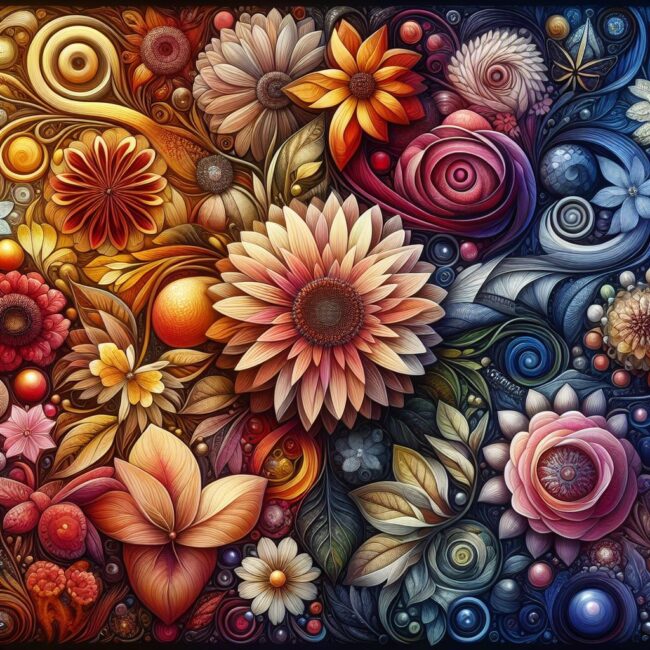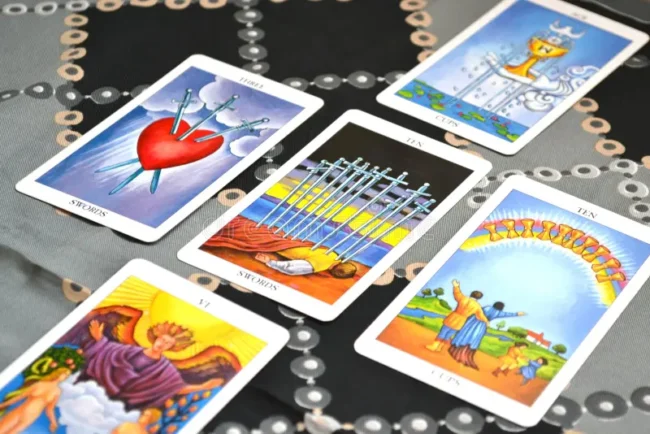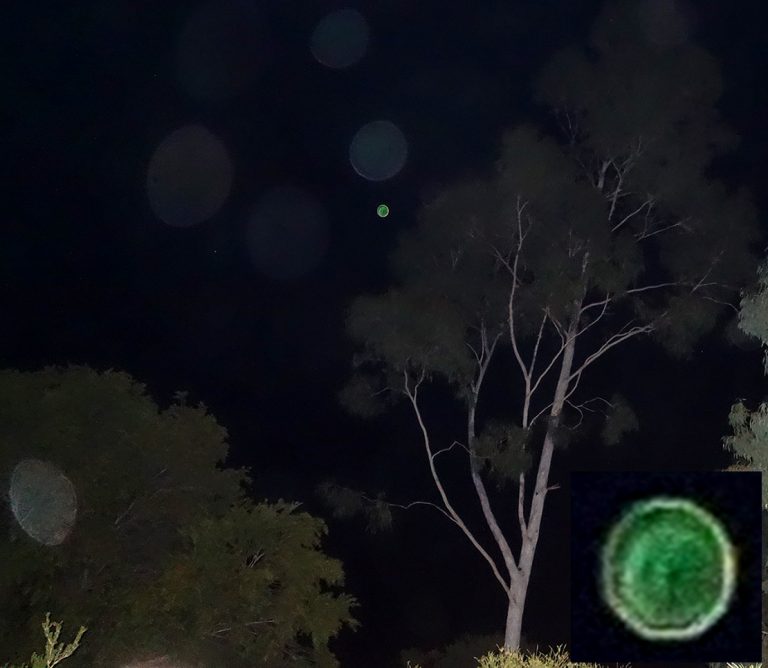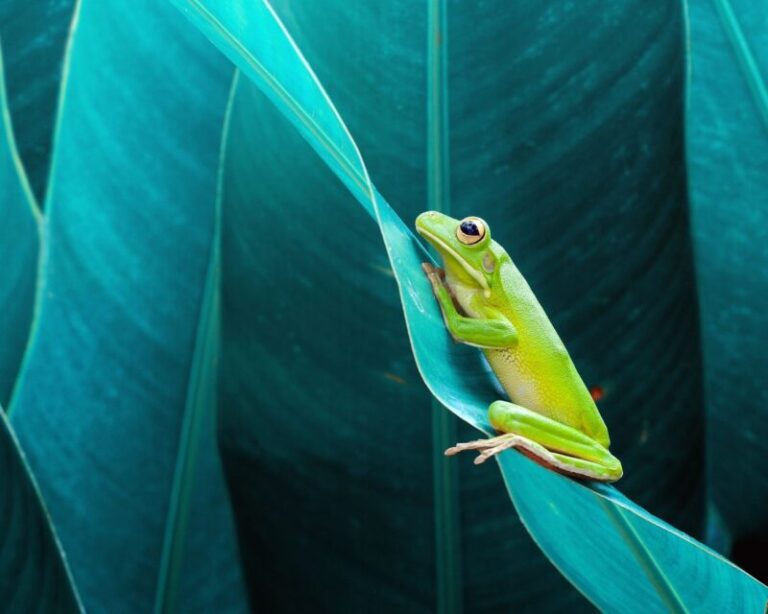101 Flower Symbolism: A Spiritual Perspective
You’re not alone if you ever wonder why flowers have been used throughout history to convey deeper meanings and emotions. The symbolism of flowers has been studied and documented by scholars, poets, and spiritual leaders for centuries.
Here are 101 flowers and their spiritual symbolism, so you can appreciate the beauty of flowers even more.
Flowers That Symbolize Love
1. Rose
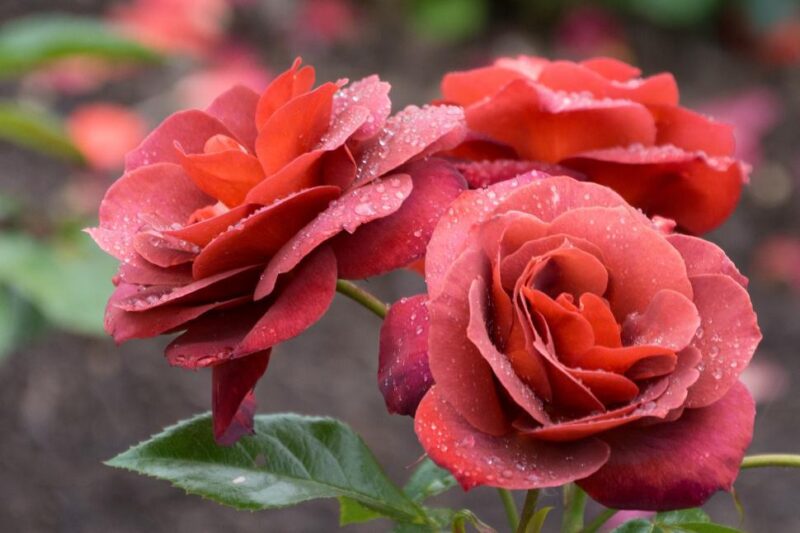
The rose is one of the most universally recognized symbols of love. The red rose, in particular, symbolizes deep and passionate love. It’s often used to express romantic love and desire.
2. Tulip
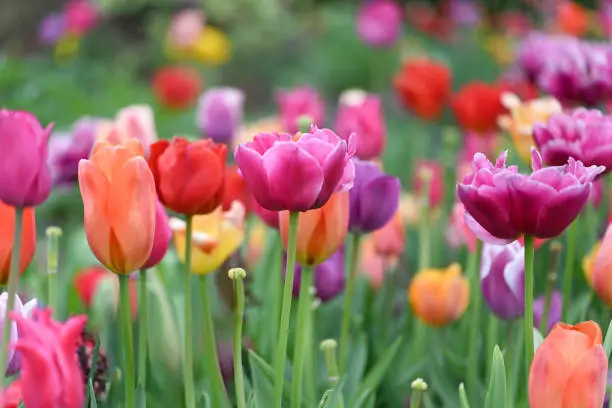
Tulips are a symbol of perfect love. They represent the balance of love, with each petal contributing equally to the beauty of the whole flower. Red tulips are often associated with declarations of love.
3. Peony
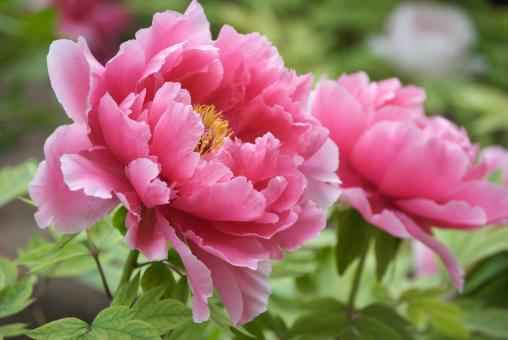
Peonies symbolize romance, prosperity, and a happy marriage. They are often used in wedding bouquets to represent the love and commitment between the couple.
4. Carnation
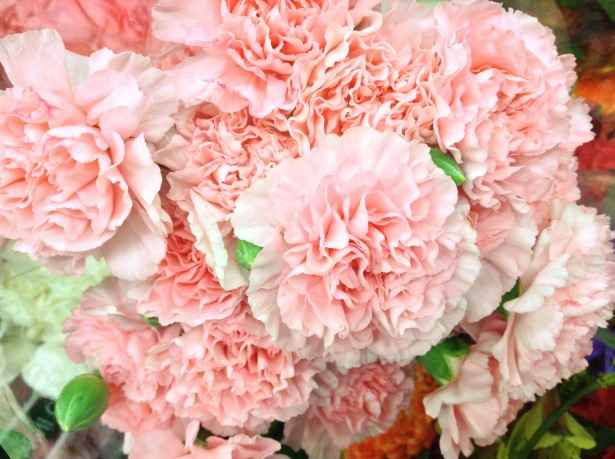
Carnations symbolize love and fascination. Each color of carnation has a different meaning with red carnations often being associated with deep love and affection.
5. Red Chrysanthemum
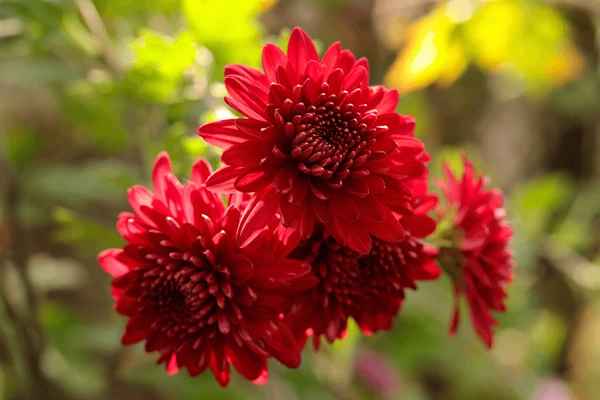
Red chrysanthemums are a symbol of love, often used in bouquets to express deep passion and romantic love. They can also represent an invitation to form a romantic relationship.
6. Orchid
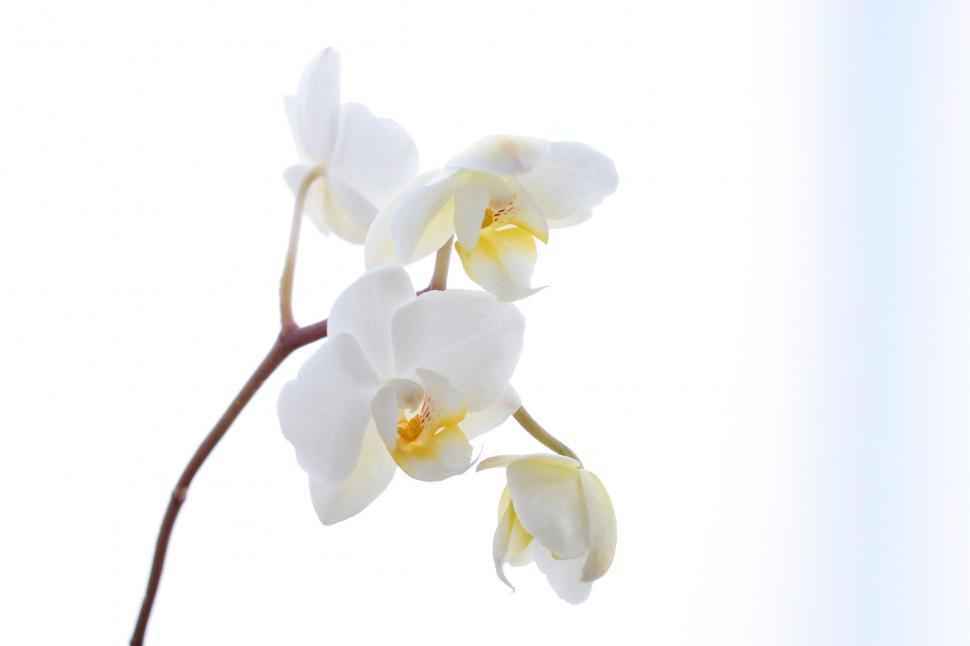
Orchids symbolize exotic beauty, strength, and love. They are often given as a gift of love due to their long-lasting bloom and exotic appearance.
7. Red Poppy
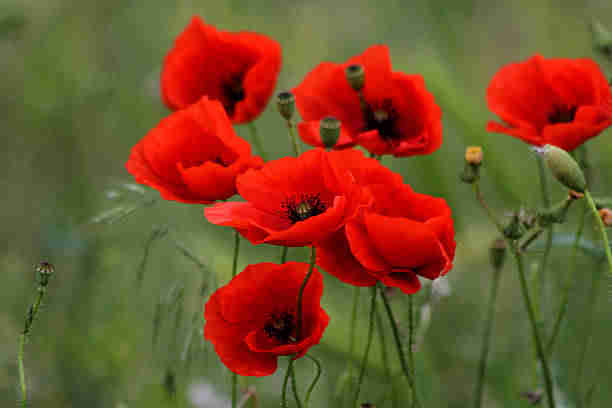
Red poppies are a symbol of pleasure and love. They are often associated with deep and passionate love, making them a popular choice for romantic occasions.
8. Forget-me-not
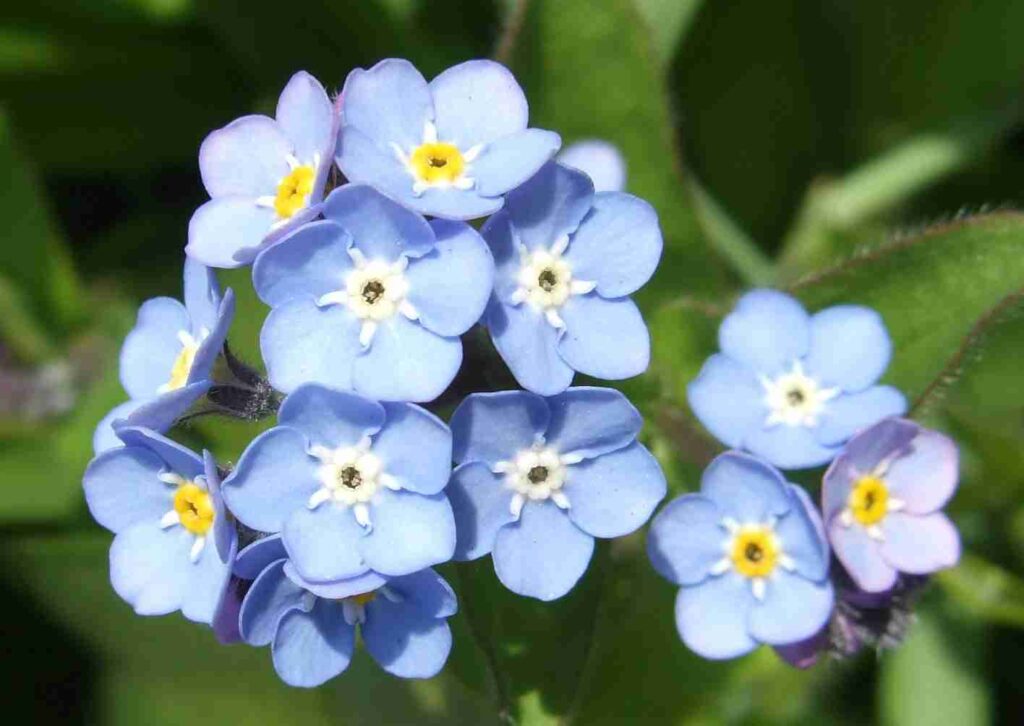
Forget-me-nots symbolize true and undying love, a connection that lasts through time. They are often used to express steadfast love and fidelity.
9. Jasmine
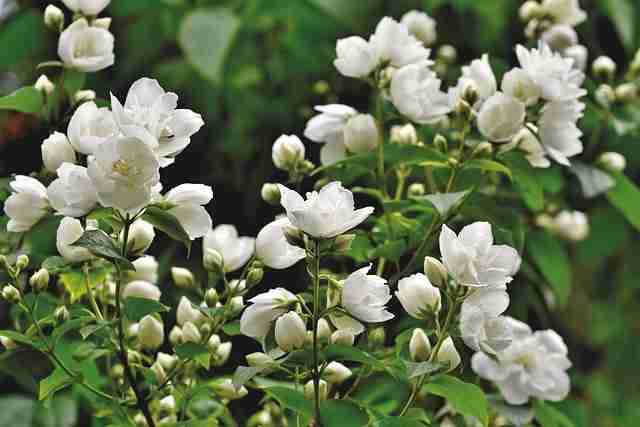
Jasmine flowers symbolize love, beauty, and sensuality. In some cultures, they are used in love rituals and ceremonies. Their intoxicating scent is often associated with romantic evenings.
10. Gardenia
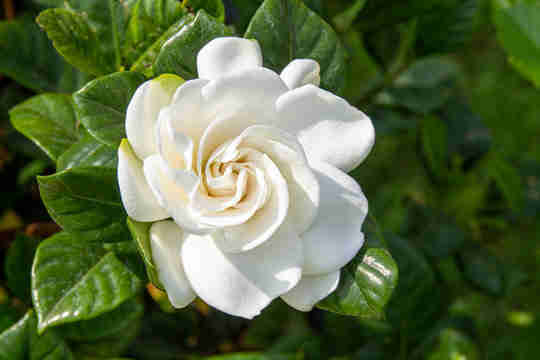
Gardenias symbolize secret love, purity, and joy. They are often used in bridal bouquets to represent the pure love between the couple. Their sweet, intoxicating scent is often associated with romantic moments.
Flowers That Symbolize Healing
11. Lavender
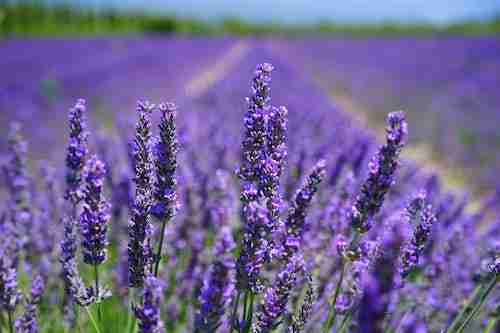
Lavender is often associated with purity, silence, devotion and serenity. Its calming scent is believed to relieve stress and promote healing of the mind. In aromatherapy, lavender oil is used to treat anxiety, insomnia, depression, and restlessness.
12. Chamomile
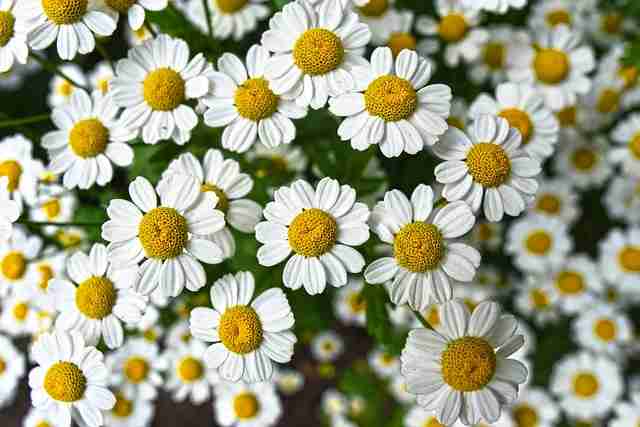
Chamomile symbolizes patience in adversity. Known for its soothing properties, it’s often used in teas to promote relaxation and alleviate stress. It also has anti-inflammatory properties that can aid in physical healing, particularly of the skin and digestive system.
13. Echinacea
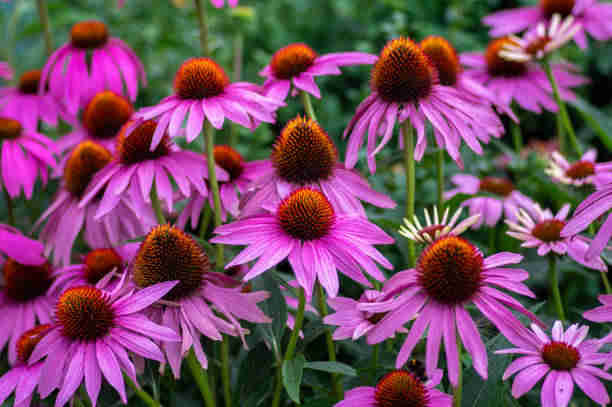
Echinacea represents strength and health. It’s often associated with the immune system due to its purported ability to prevent and treat common colds and other infections.
14. Calendula
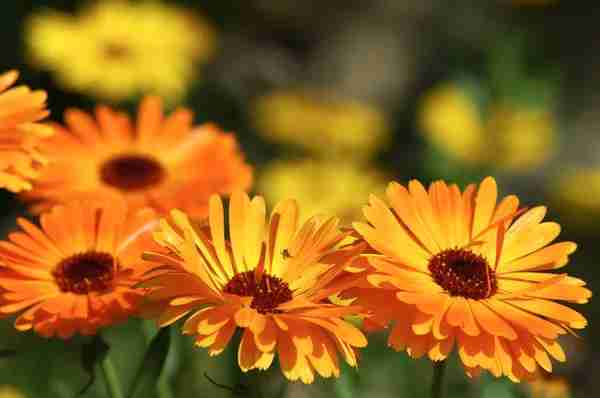
Calendula symbolizes joy and happiness. It’s also associated with the sun and light. In traditional medicine, calendula is used for wound healing and as an anti-inflammatory and antiseptic agent.
15. Aloe Vera
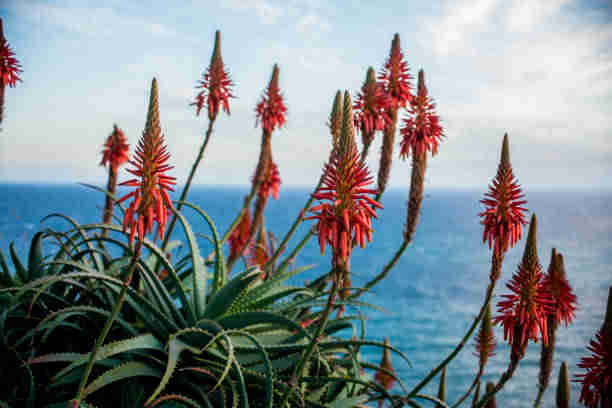
Aloe Vera represents healing, protection, and affection. It’s renowned for its healing properties, particularly in skincare, where it’s used to soothe burns, abrasions and other skin conditions.
16. Yarrow
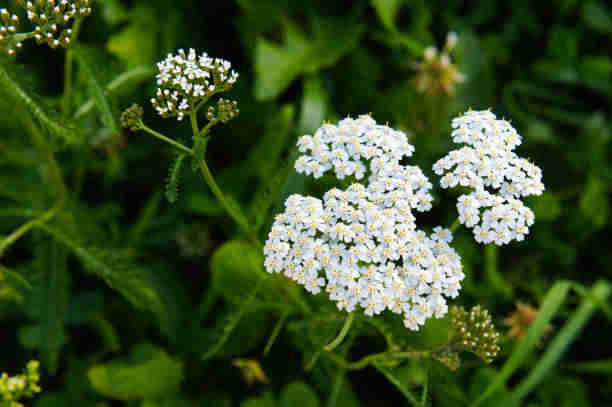
Yarrow symbolizes both healing and harm, reflecting its dual use in traditional medicine: to heal wounds and to induce bleeding. It’s associated with courage, love, and psychic abilities.
17. Sage

Sage is a symbol of wisdom, immortality, and purification. It’s often used in spiritual rituals for cleansing and protection. Medicinally, sage can aid digestion, improve cognitive function and alleviate symptoms of menopause.
18. Peppermint
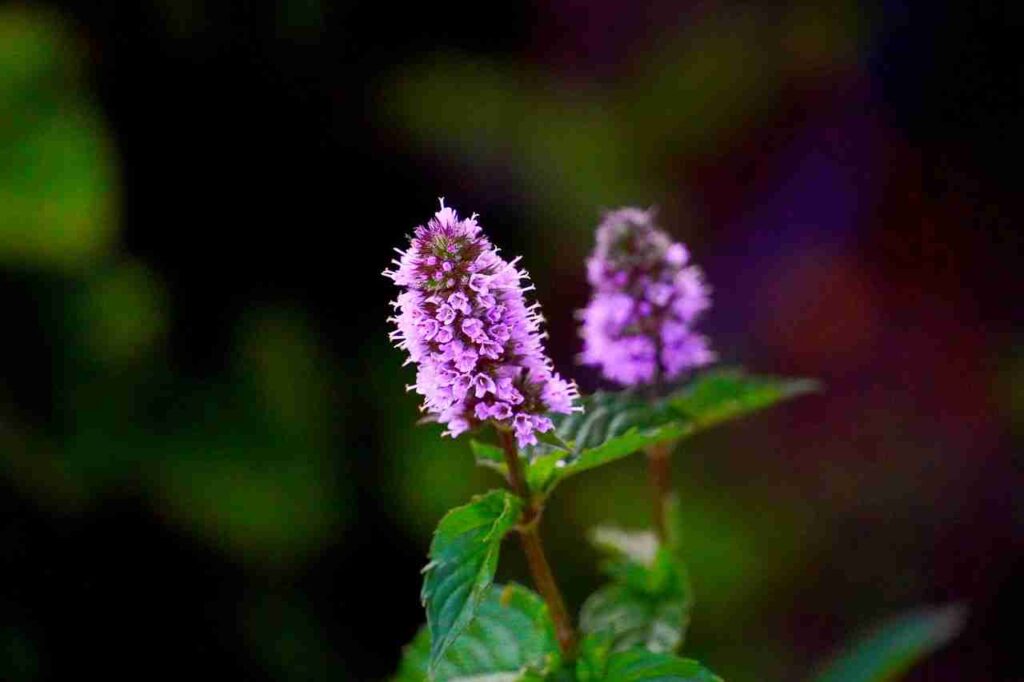
Peppermint symbolizes warmth and cheerfulness. It’s known for its invigorating scent and cooling sensation. In healing, peppermint is often used to soothe digestive issues, headaches and muscle pain.
19. Thyme
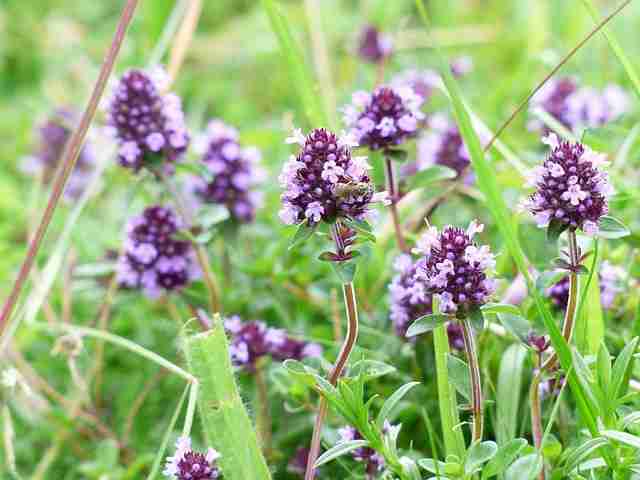
Thyme represents courage, strength, and bravery. In ancient cultures, thyme was used to purify homes and temples. Medically, it’s known for its antibacterial properties and is used in treating respiratory conditions.
20. Dandelion
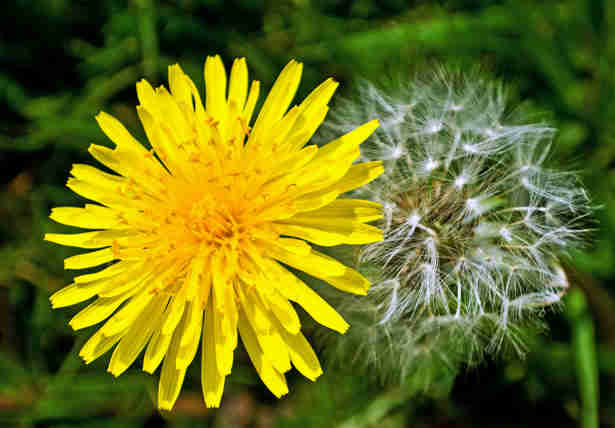
Dandelion symbolizes resilience and determination due to its ability to thrive in harsh conditions. It’s often associated with wishes, dreams, and desires. In traditional medicine, dandelions are used as a diuretic and for detoxification.
Flowers That Symbolize Peace
21. White Lily
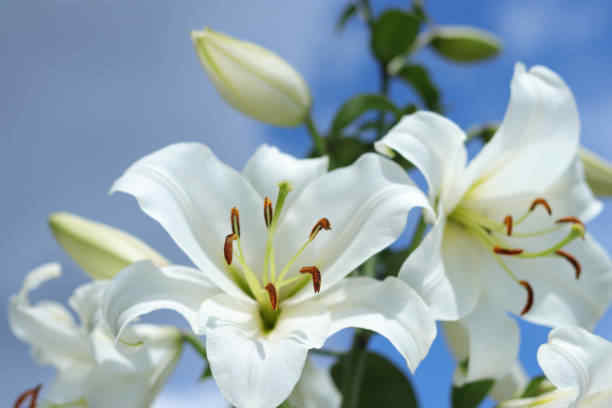
The white lily is a symbol of purity and innocence, often associated with peace. It is believed to restore a sense of tranquility and harmony, making it a great flower for those seeking peace.
22. Lotus
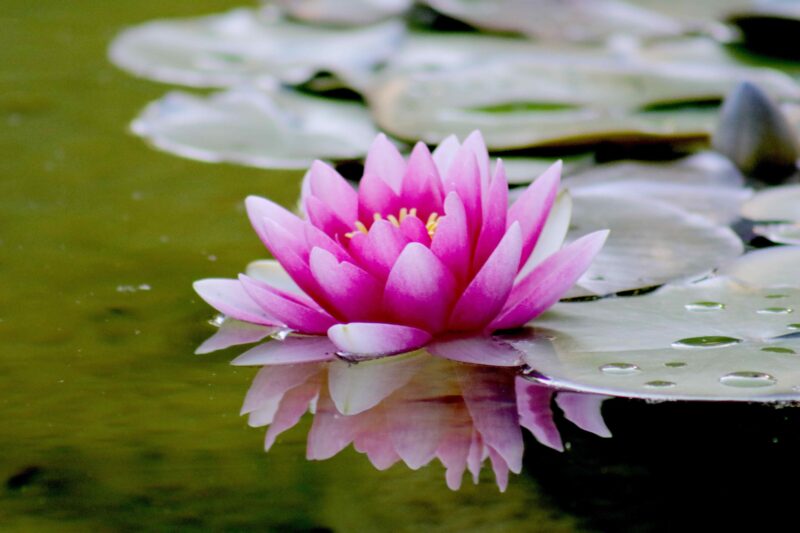
The lotus flower is a powerful symbol in various cultures and religions, including Buddhism and Hinduism. It represents enlightenment and self-regeneration, both of which are paths to inner peace. Its ability to bloom in muddy waters denotes resilience and the ability to rise above adversity.
23. White Rose
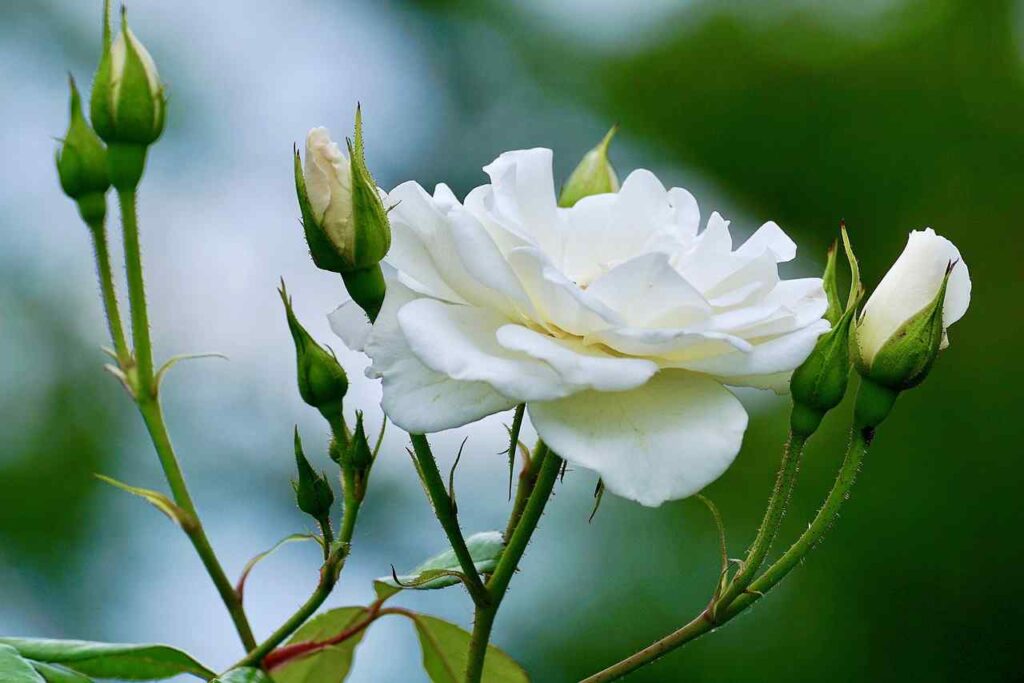
The white rose symbolizes innocence and purity. It’s often used at weddings and funerals to evoke feelings of peace and unity. The white rose is also used as a symbol of remembrance, signifying everlasting love and respect.
24. Olive Branch
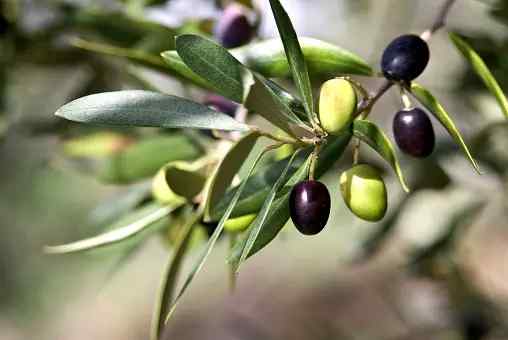
Though not a flower, the olive branch has been a symbol of peace and victory since ancient times. In Greek mythology, it was associated with Eirene, the goddess of peace. Today, extending an “olive branch” means making an offer of peace or reconciliation.
25. Baby’s Breath
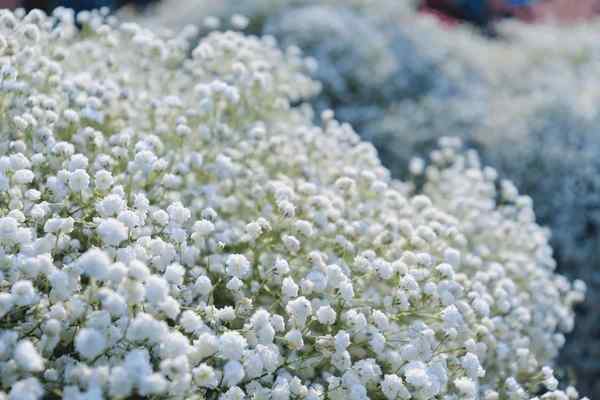
Baby’s breath, with its small, delicate white flowers, symbolizes innocence and purity. It’s often used in bridal bouquets, signifying the peaceful beginning of a new life together.
26. White Poppy
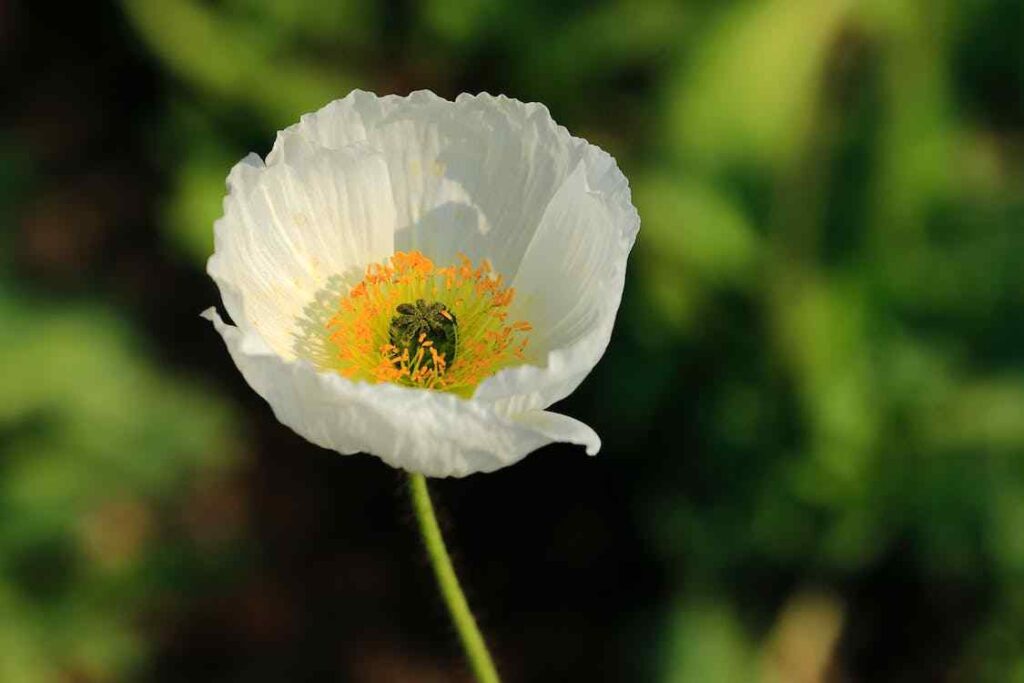
The white poppy is a symbol of peace and remembrance. It’s used to commemorate those who have lost their lives in conflict and to promote a culture of peace.
27. White Tulip
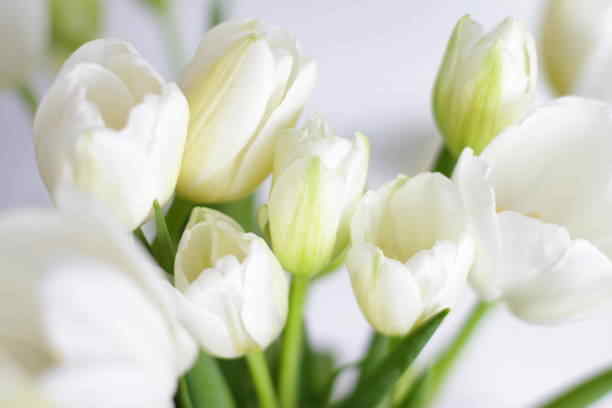
White tulips are known for their beauty and elegance. They are often associated with purity, innocence, and peace. Giving someone white tulips can signify a desire for forgiveness or reconciliation.
28. Magnolia
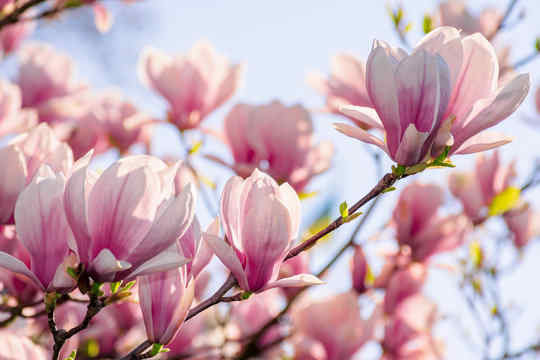
Magnolias are often seen as symbols of dignity and nobility. In Chinese culture, they’re associated with purity and the natural world’s perfection. Their lush, white flowers can symbolize peace and tranquility.
29. White Carnation
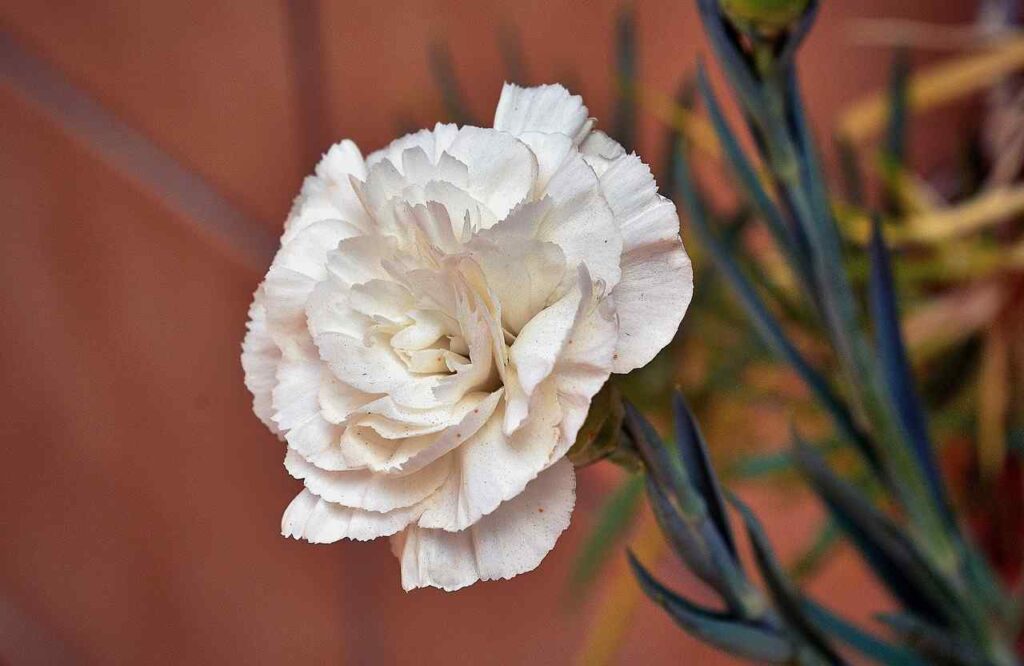
White carnations symbolize purity, innocence, and love. They have a long history of being used in weddings, where they represent peace and unity. In some cultures, white carnations are given to mothers in recognition of their love and sacrifices, reinforcing their role as peacekeepers.
30. White Orchid
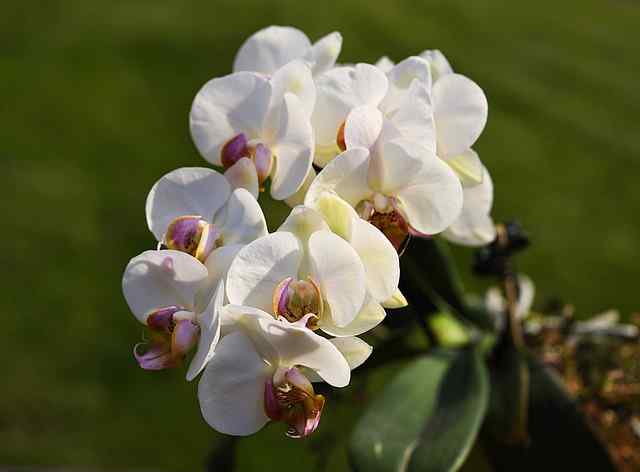
The white orchid symbolizes innocence, beauty, and elegance. It’s often associated with purity and peace due to its pristine appearance. In some cultures, the white orchid signifies spiritual wisdom, promoting inner peace that comes from understanding oneself and the world around one.
Flowers That Symbolize Happiness
31. Sunflower

Sunflowers symbolize adoration, loyalty, and longevity, all of which are components of happiness. They are known for being “happy” flowers, making them the perfect gift to bring joy to someone’s day. Their bright, yellow color is also suggestive of the sun, which is often associated with happiness and positivity.
32. Daisy
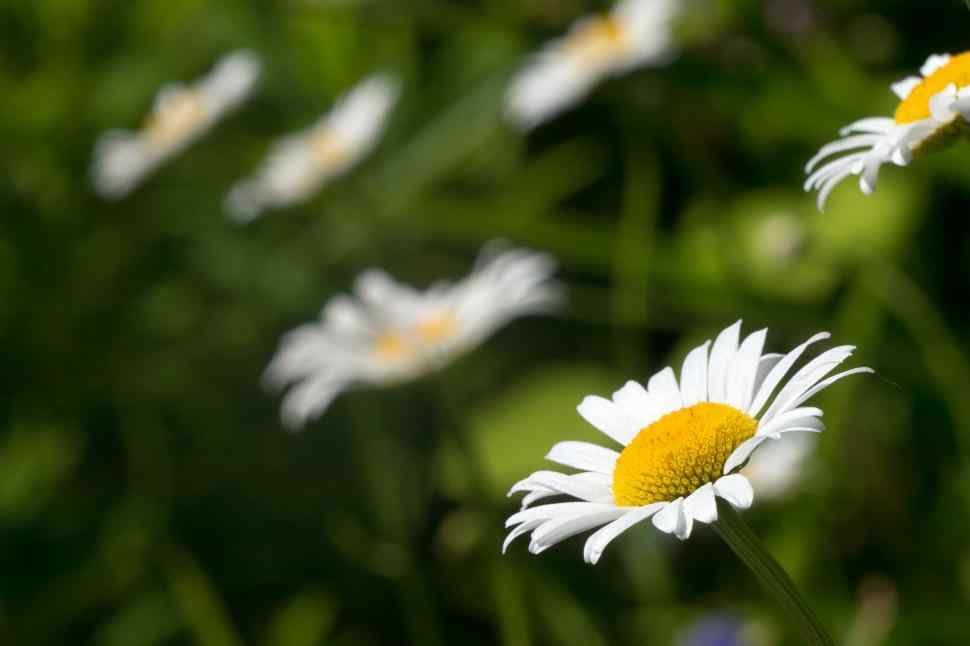
Daisies represent innocence, purity, and cheerfulness – qualities often linked to happiness. The daisy’s simplicity yet striking beauty is what makes it a symbol of happiness.
33. Yellow Tulip
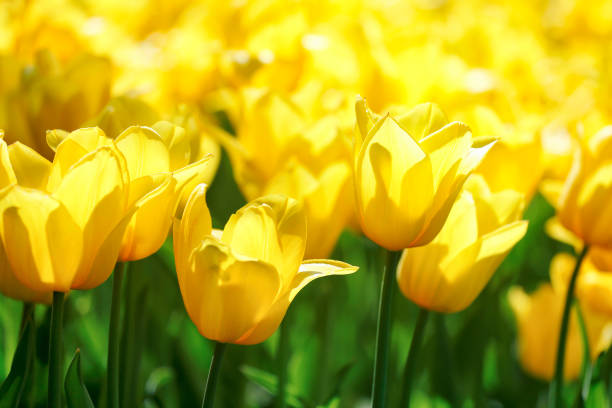
In the language of flowers, yellow tulips symbolize cheerful thoughts and sunshine. They are considered a symbol of perfect love and happiness. Their vibrant color brightens up any room and evokes feelings of joy.
34. Zinnia
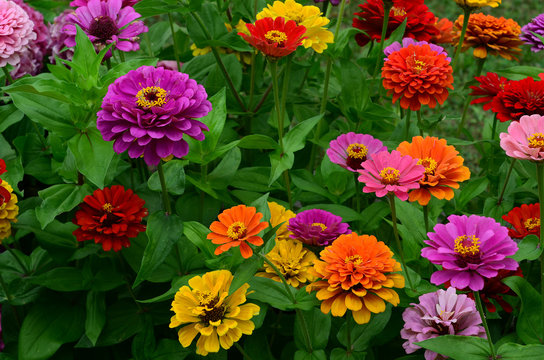
Zinnia flowers symbolize lasting friendship, goodness, and remembrance. Their vibrant colors and multi-petal structure signify an abundance of joy and positivity, making them a perfect representation of happiness.
35. Marigold
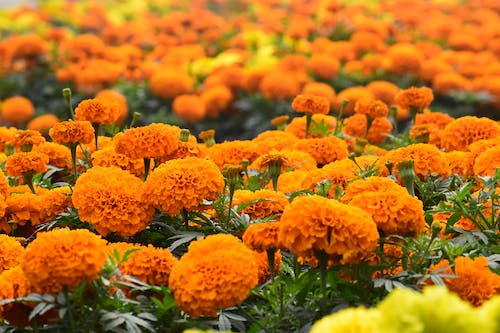
Marigolds symbolize the warmth of the rising sun and the comforting feelings it brings. They also represent creativity and the magic of life, both aspects connected to happiness and joy.
36. Yellow Rose
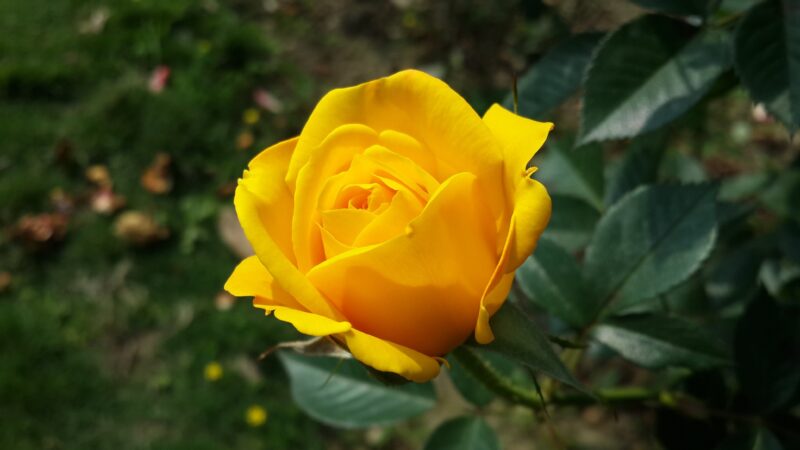
Yellow roses are a traditional symbol of friendship and joy. They convey warmth, delight, gladness, and affection, making them a perfect choice to express happiness.
37. Gerbera
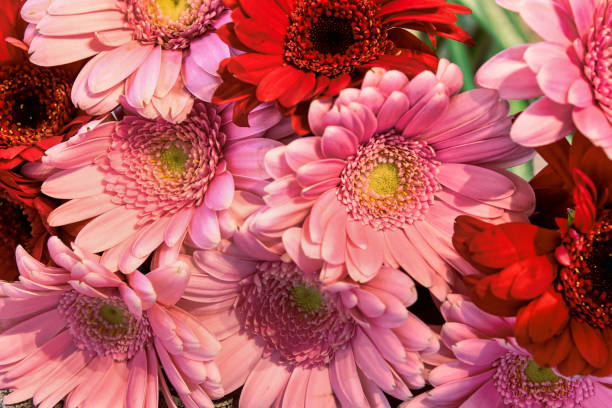
Gerbera daisies are known for symbolizing cheerfulness. They are often associated with purity, innocence, and overall happiness. Their large flowering heads and bright colors can instantly boost the mood of any person or place.
38. Daffodil

Daffodils symbolize new beginnings, rebirth, and eternal life. They are often associated with the coming of spring, a time when happiness and joy are plentiful. Daffodils represent unrequited love and are considered one of the happiest of all flowers.
39. Snapdragon
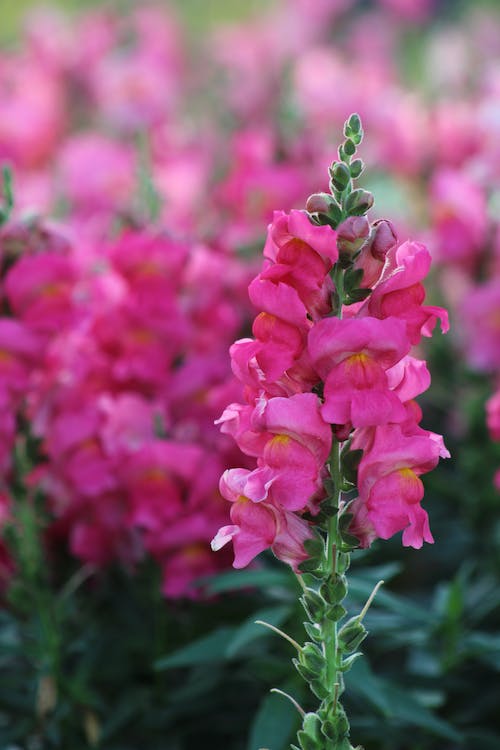
Snapdragons symbolize grace, strength, and resilience, qualities that often lead to happiness. They also convey a message of mystery and fascination, adding a sense of intrigue and joy to any occasion.
40. Iris

Iris flowers symbolize hope, faith, courage, wisdom, and admiration. With its striking colors and elegant shape, the iris can easily bring a smile to anyone’s face, making it another flower that represents happiness.
Flowers That Symbolize Friendship
41. Yellow Rose
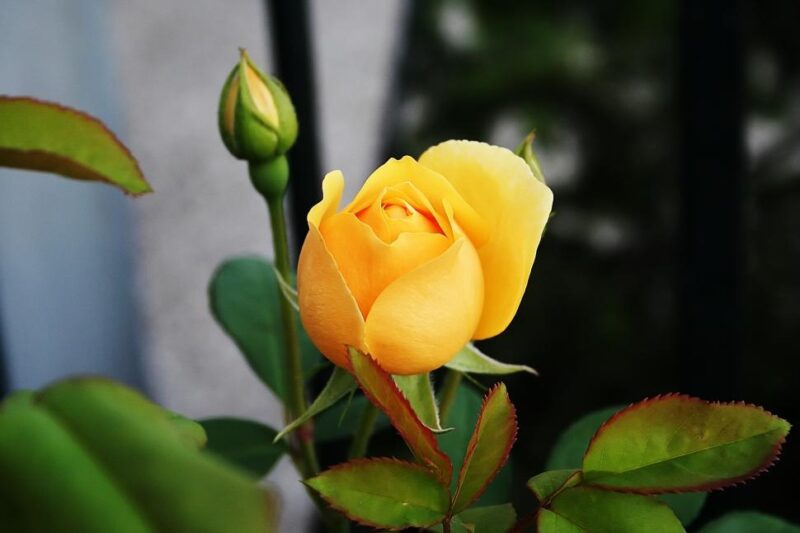
The yellow rose, with its sunny brilliance, stands as a symbol of friendship and joy. It conveys warmth, delight, and affection. A bouquet of these sun-filled blossoms sends a message of enduring friendship, mutual respect, and platonic love.
42. Alstroemeria
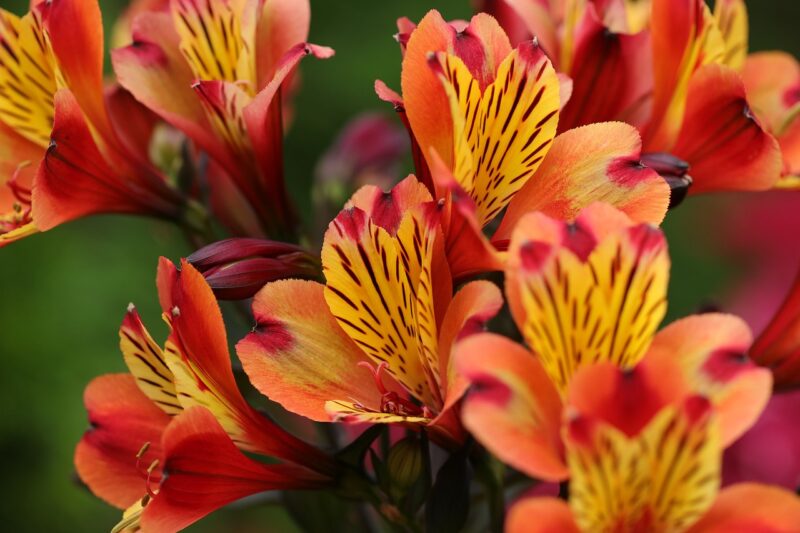
Often referred to as the “Friendship Flower,” Alstroemeria symbolizes wealth, prosperity and fortune. However, it is also symbolic of strong, enduring friendship due to its twisted leaves which indicate a friendship that withstands trials and tribulations.
43. Chrysanthemum
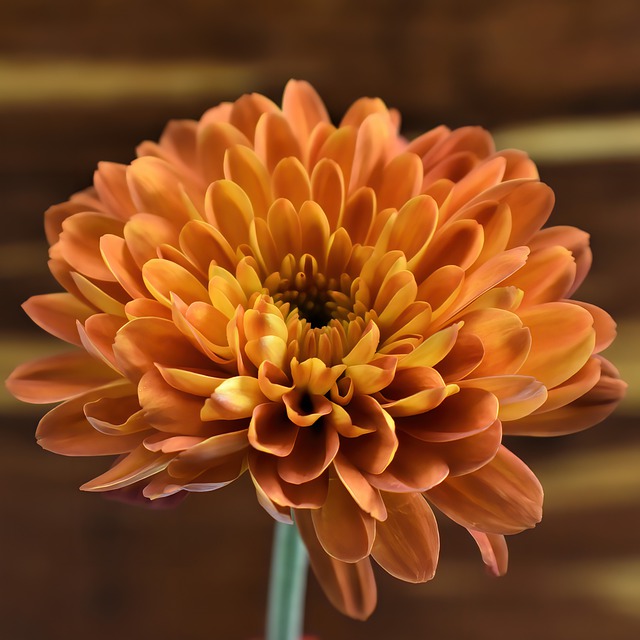
In general, Chrysanthemums symbolize loyalty and honesty, qualities intrinsic to a solid friendship. In Japan, these flowers are given to friends as a symbol of friendship and well-wishing.
44. Blue Iris
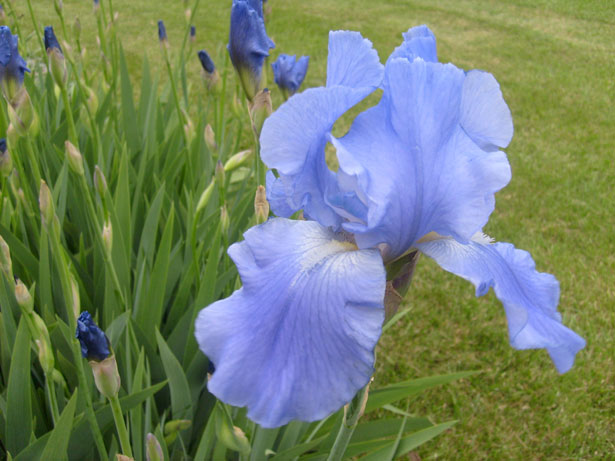
Blue Irises are symbolic of hope and faith. However, they are also used to represent cherished friendships. Their bold hues of blue signify deep feelings and trust between two people.
45. Freesia
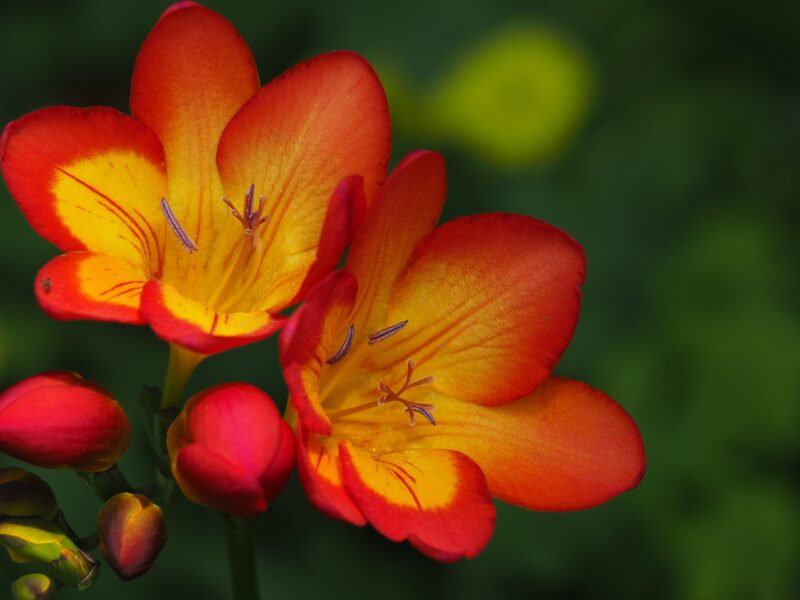
Freesias are often given to celebrate significant milestones in life. They symbolize trust, innocence, and thoughtfulness – attributes that are key to any lasting friendship.
46. Hyacinth
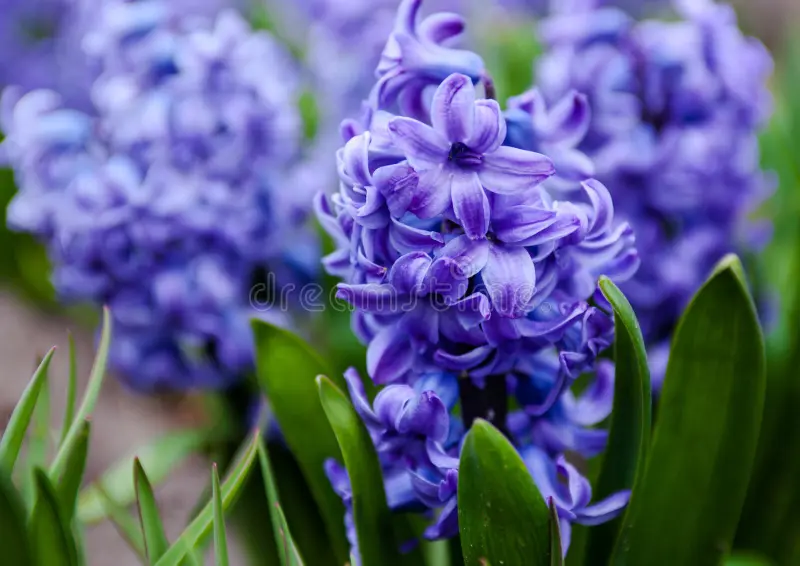
The Hyacinth flower has a variety of meanings but is often used to symbolize sport or play, the spirit of youth, and constancy – a fitting tribute to long-term friendship.
47. Yellow Tulip
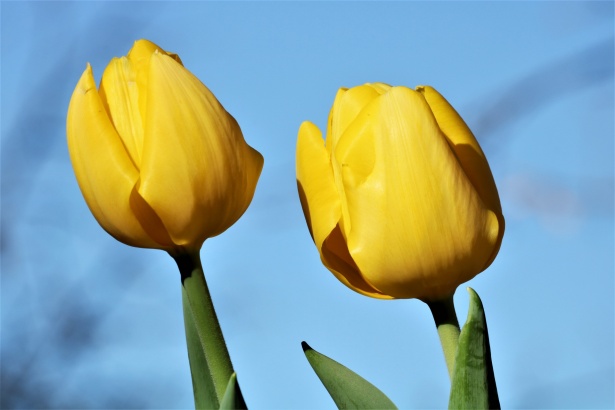
Once a symbol of hopeless love, Yellow Tulips now represent cheerfulness and happiness – the perfect gift for a good friend. They’re a beacon of friendship and caring.
48. Gladiolus
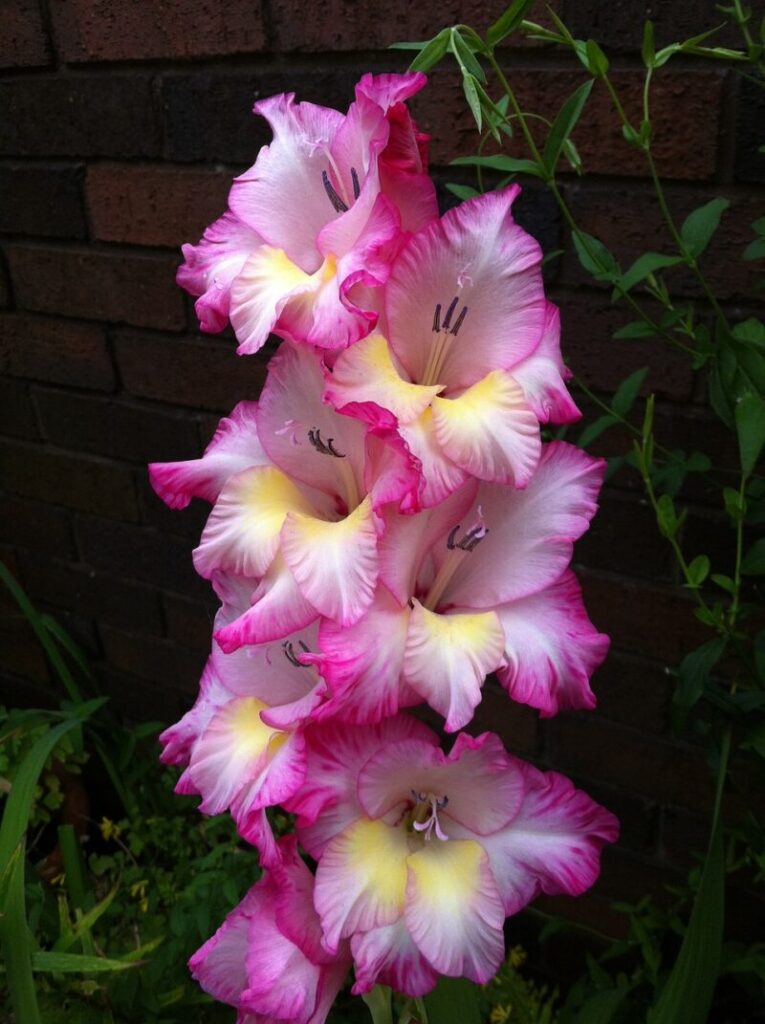
Gladiolus, also known as “sword lily,” represents strength, integrity, and infatuation. Giving this flower tells a friend that they pierce your heart with passion and that you are deeply invested in your friendship.
49. Periwinkle

Periwinkle is a symbol of blossoming friendships, everlasting love, and memories. It’s the perfect flower to give to someone with whom you’ve shared unforgettable moments.
50. Sweet Pea
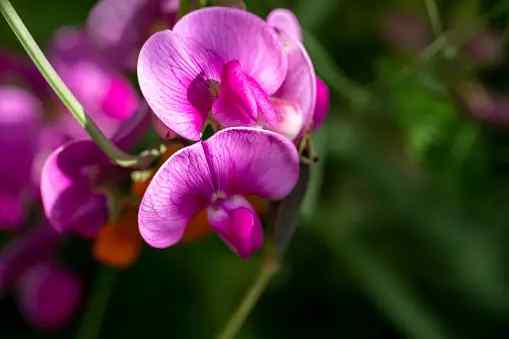
Sweet peas signify pleasure or saying goodbye. In the language of flowers, they are used to express appreciation and to thank someone for a lovely time, often given to friends.
Flowers That Symbolize Sympathy
51. White Lily
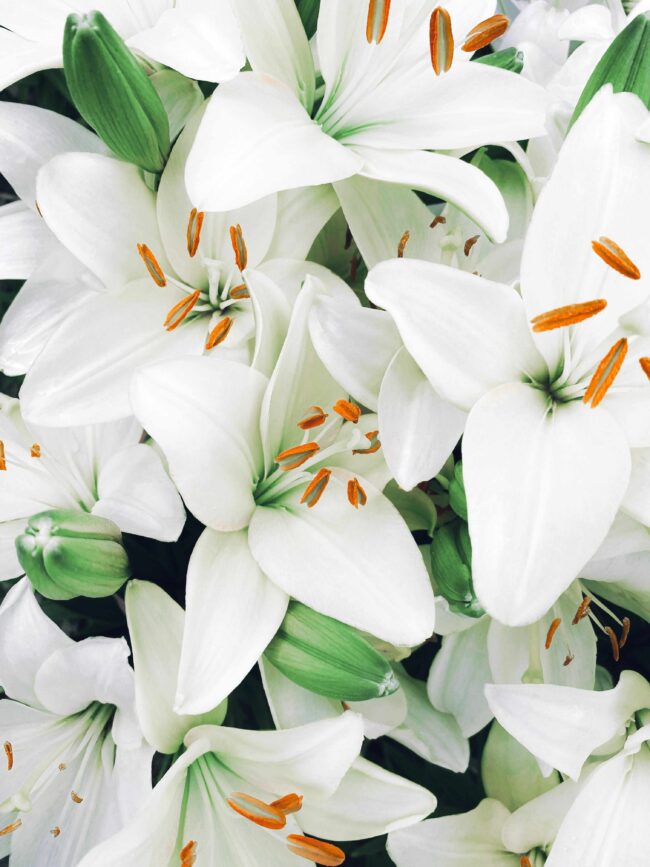
White lilies are often associated with funerals as they symbolize the restored innocence of the soul of the deceased. These flowers represent purity and radiance and are often used to express sympathy and respect.
52. White Rose
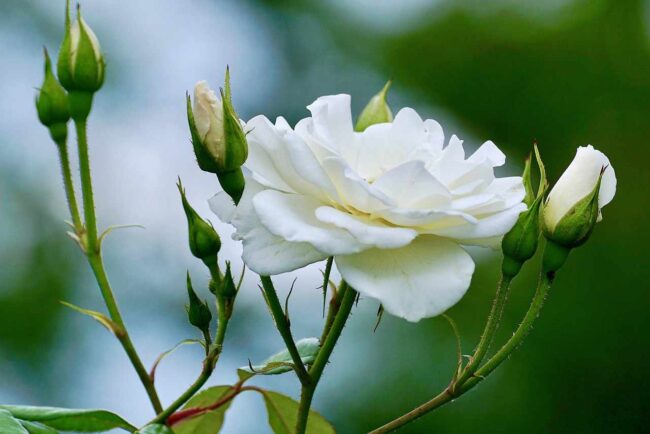
White roses symbolize innocence, purity, and youthfulness. In the context of sympathy, they can convey respect, pay homage to new starts, and express hope for the future.
53. Forget-me-not
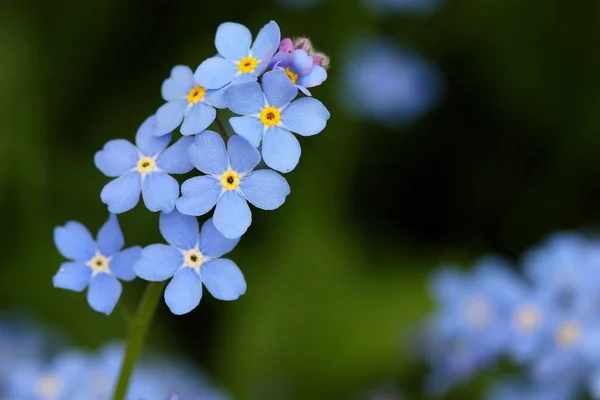
The forget-me-not flower is a symbol of remembrance. They are often used to signify true love that lasts forever and are a way to ensure that an individual, event, or memory is not forgotten.
54. White Chrysanthemum
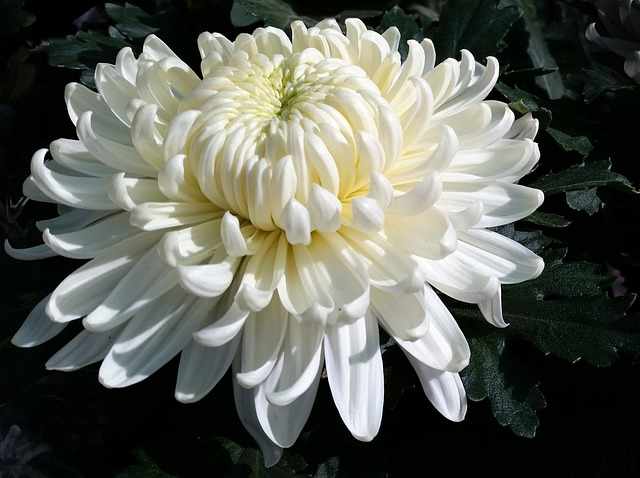
In many cultures, white chrysanthemums are symbolic of death and are often used for funerals or graves. They are a symbol of lamentation and grief, making them appropriate for expressing condolences.
55. White Carnation
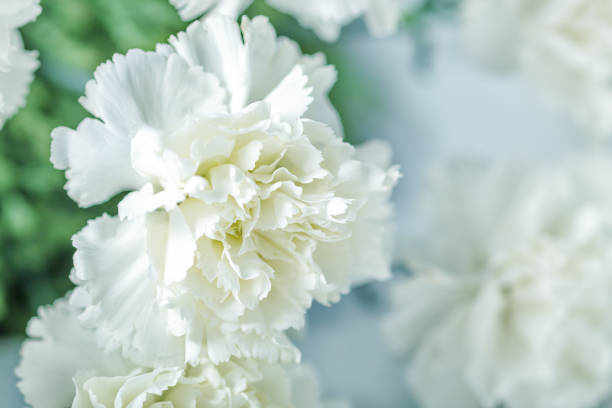
White carnations stand for pure love and innocence. They are often used in sympathy arrangements due to their long-lasting and aromatic nature.
56. White Orchid
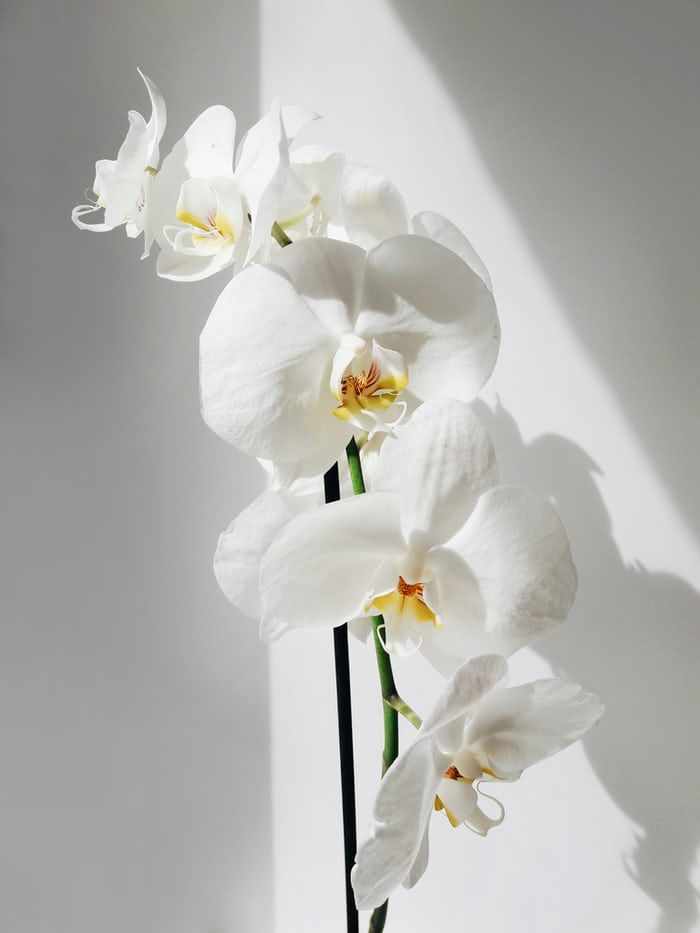
White orchids symbolize beauty, strength, and love. They are often used to convey heartfelt respect and admiration, making them suitable for expressing sympathy.
57. White Tulip
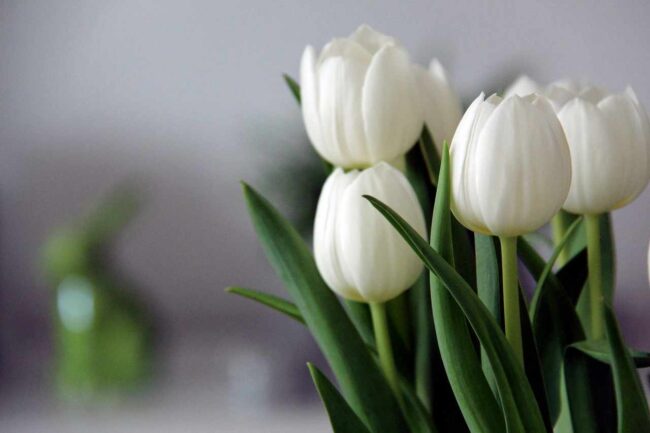
White tulips are the symbol of forgiveness, respect and honor. They could make a perfect flower for expressing sympathy to someone who has just lost a loved one.
58. Sweet Pea
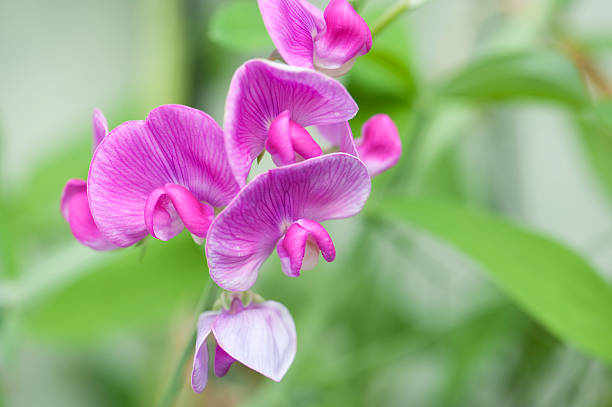
Sweet peas signify departure or goodbye. They can be used to express your sorrow for someone’s loss and your recognition of a new journey they have to embark on without their loved one.
59. Hyacinth
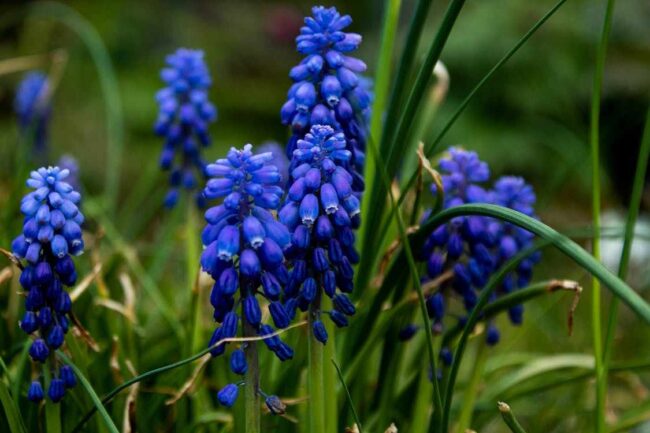
Hyacinths generally symbolize playfulness and a sporty attitude and in its extreme rashness. However, the purple hyacinth is a symbol of sorrow and regret. It may be used to express your sadness over someone’s passing.
60. Peony
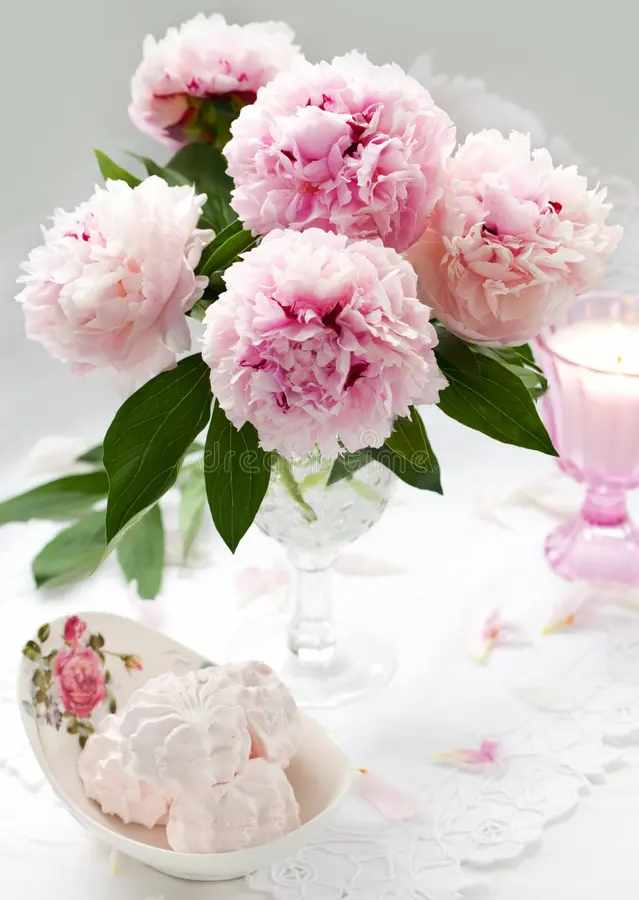
Peonies symbolize a variety of things including romance, prosperity, good fortune, a happy marriage, riches, honor, and compassion. In the context of expressing sympathy, peonies can represent a wish for peace in the other person’s time of sorrow.
Flowers That Symbolize Strength and Courage
61. Gladiolus
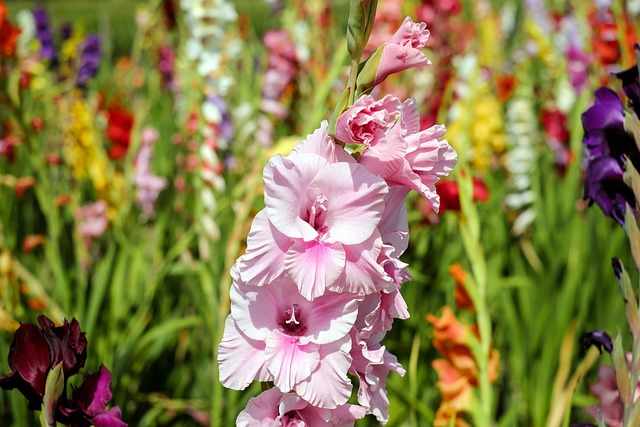
The gladiolus, also known as the sword lily, symbolizes strength, victory, and moral integrity. The name comes from the Latin word ‘gladius’, which means sword. It’s a flower that signifies the strength of character and is often associated with heroes who show courage in battles, both literal and figurative.
62. Protea
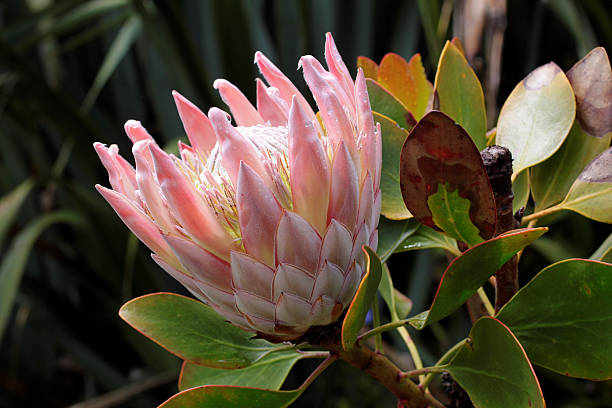
Protea, a unique and ancient flower, symbolizes transformation, diversity, and courage. It’s one of the oldest flowers on earth and its ability to thrive in harsh conditions represents resilience and strength. The protea flower stands for boldness and courage to face any situation.
63. Thistle

Thistle, despite its prickly appearance, holds a strong symbolism. It represents endurance, surviving in difficult conditions, and defending oneself against threats. It’s a symbol of protection, strength, and courage in many cultures.
64. Red Chrysanthemum
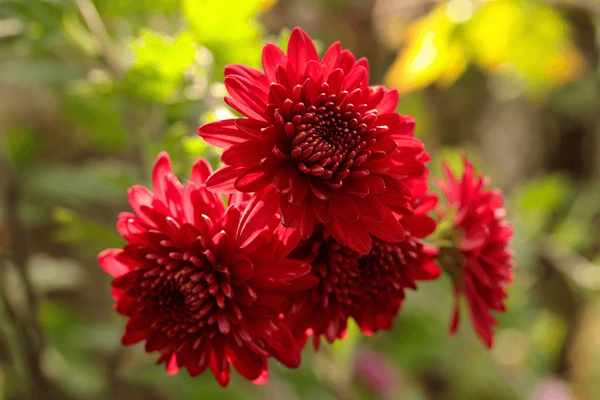
Red Chrysanthemums carry the meaning of love, deep passion, and optimism. In addition to these meanings, they also represent strength and courage in the face of adversity. They are often given as a symbol of encouragement and support.
65. Oak Leaves
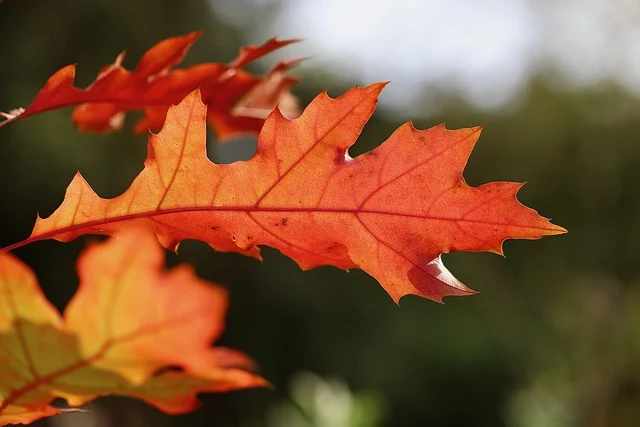
While not a flower, oak leaves hold potent symbolism. They represent strength, honor, longevity, and steadfastness. In many cultures, the mighty oak tree is seen as a symbol of courage and power, hence its leaves carry the same symbolism.
66. Sunflower
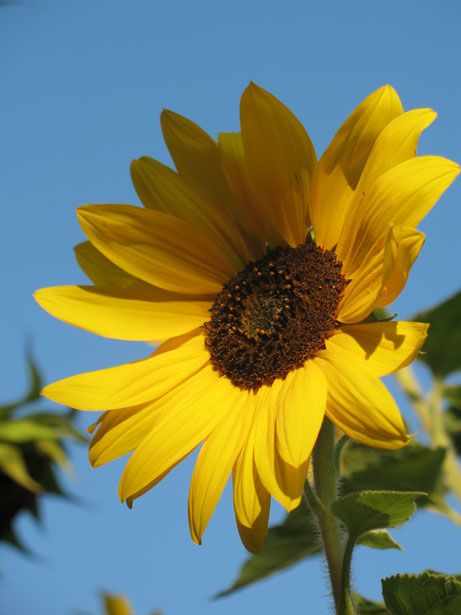
Sunflowers, known for their bright and tall presence, symbolize adoration, loyalty, and longevity. Their ability to turn their heads towards the sun shows determination and strength. They are also seen as symbols of courage due to their size and brightness.
67. Cactus Flower
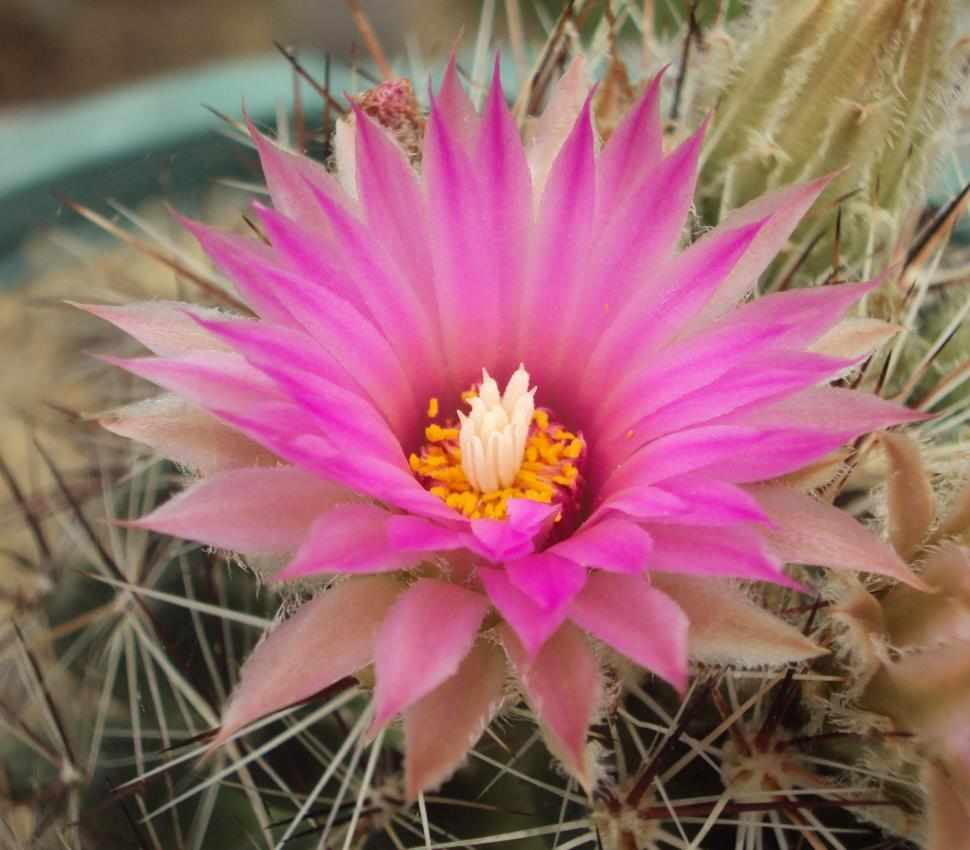
The blooming of a cactus flower, despite living in harsh desert conditions, is a true testament to resilience and strength. It symbolizes enduring all things, no matter how hard they are, and surviving against the odds. This makes the cactus flower a symbol of courage and invincibility.
68. Snapdragon
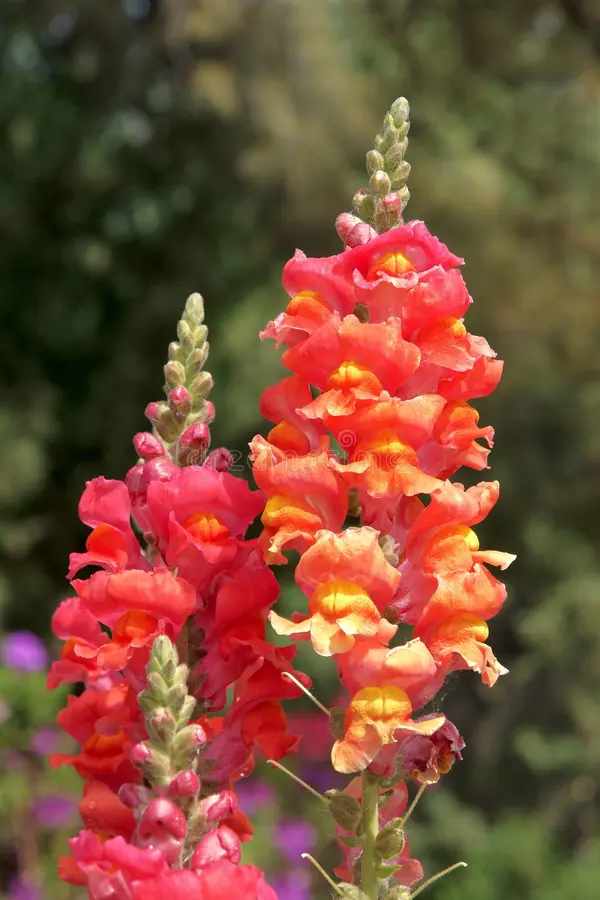
Snapdragons are often seen as symbols of grace under pressure and inner strength in challenging situations. They represent both deception (due to their unique shape) and graciousness. But above all, they stand for power, strength, and resilience.
69. Amaryllis
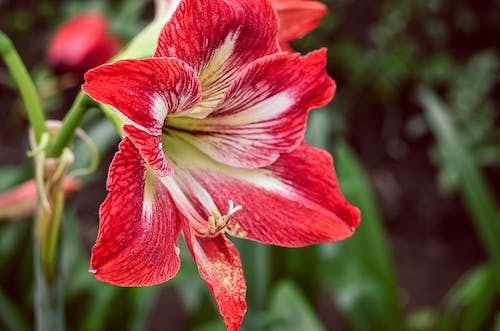
Amaryllis, with its striking and bold blooms, symbolizes pride, determination, and radiant beauty. They are often associated with success after a struggle, hence denoting strength and courage.
70. Bird of Paradise
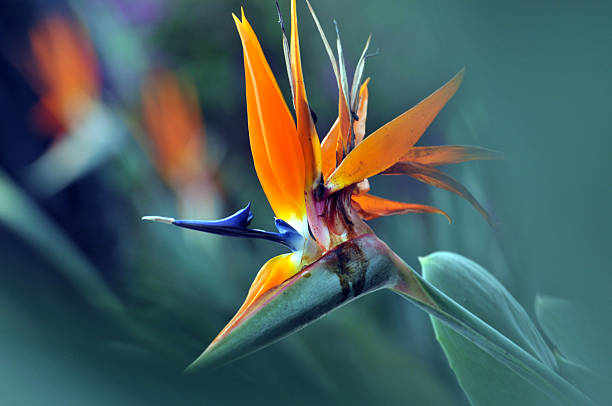
The Bird of Paradise flower is a symbol of freedom, beauty, and magnificence. With its bird-like appearance, it represents the ability to fly, indicating a sense of fearlessness and exploration. It’s a symbol of strength and courage, inspiring us to venture into the unknown.
Flowers That Symbolize Purity and Innocence
71. White Lily
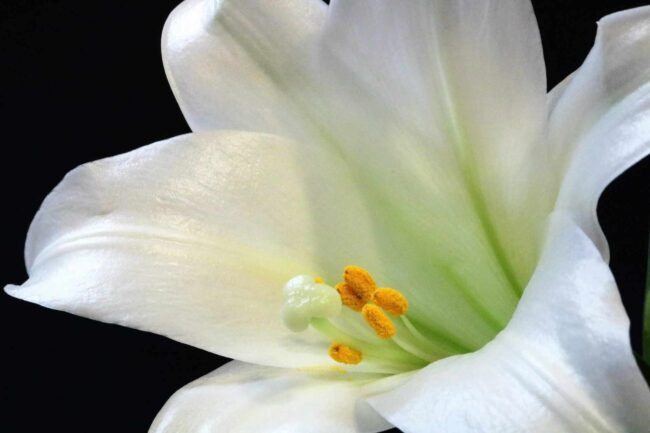
The white lily, often referred to as the ‘Madonna Lily’ in Christian art, is a symbol of purity and innocence. It’s often used in religious ceremonies and funerals to represent the restored innocence of the soul of the deceased.
72. Daisy

Daisies symbolize innocence and purity. In Norse mythology, the daisy is Freya’s sacred flower, and as such, it came to symbolize childbirth, motherhood, and new beginnings. Daisies are sometimes given to congratulate new mothers.
73. White Rose
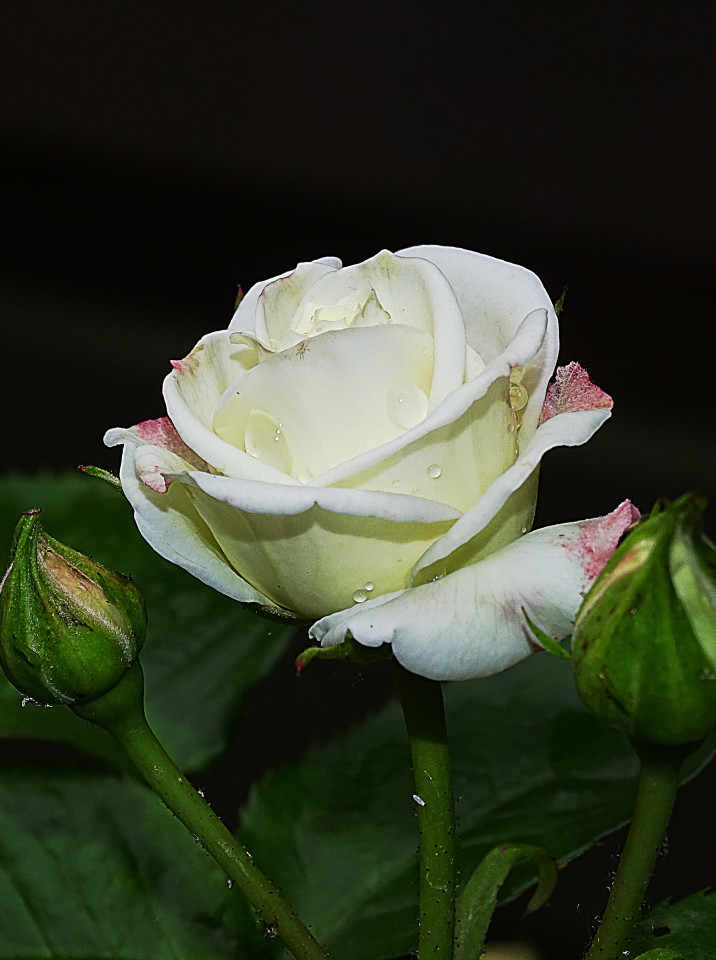
White roses often represent purity, innocence, and youthfulness. They are sometimes referred to as bridal roses because of their association with young love and eternal loyalty.
74. Baby’s Breath
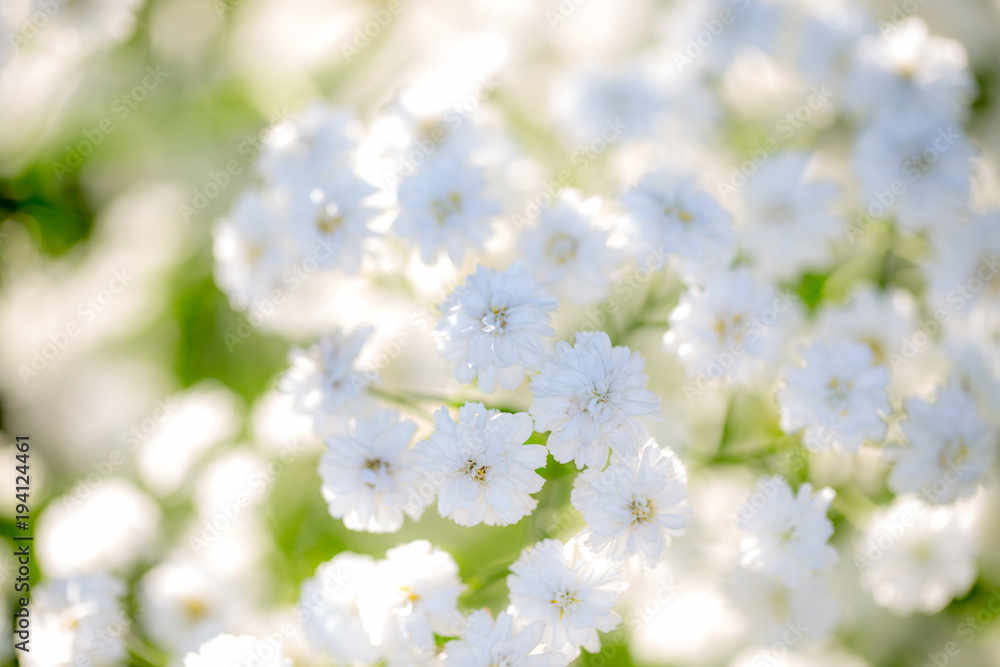
Baby’s Breath, with its small, delicate white flowers, symbolizes everlasting love, purity, and innocence. They’re often used in wedding decorations and bouquets, signifying the pure emotion of the bride and groom.
75. White Tulip
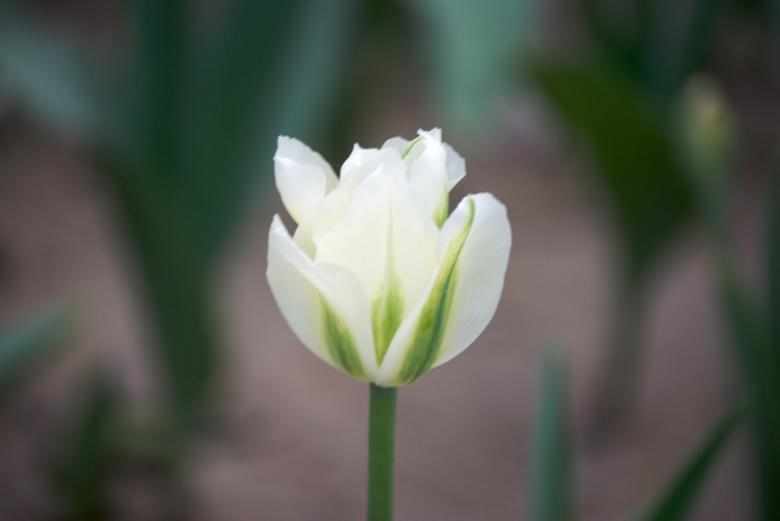
White tulips are used to claim worthiness or to send a message of forgiveness. They symbolize purity, innocence, forgiveness and respect. They can be used in a variety of occasions such as weddings, funerals, and celebrations of milestones.
76. Gardenia
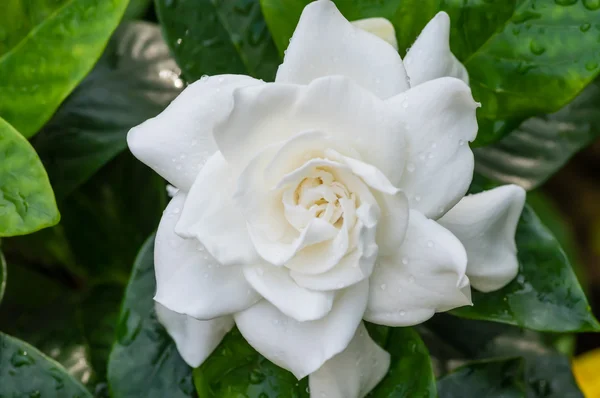
The gardenia’s pure white flowers and intoxicating scent have made it a favorite for generations. They symbolize purity and sweetness. They convey joy, tell the receiver they are lovely, and express genuine, heartfelt love.
77. White Carnation
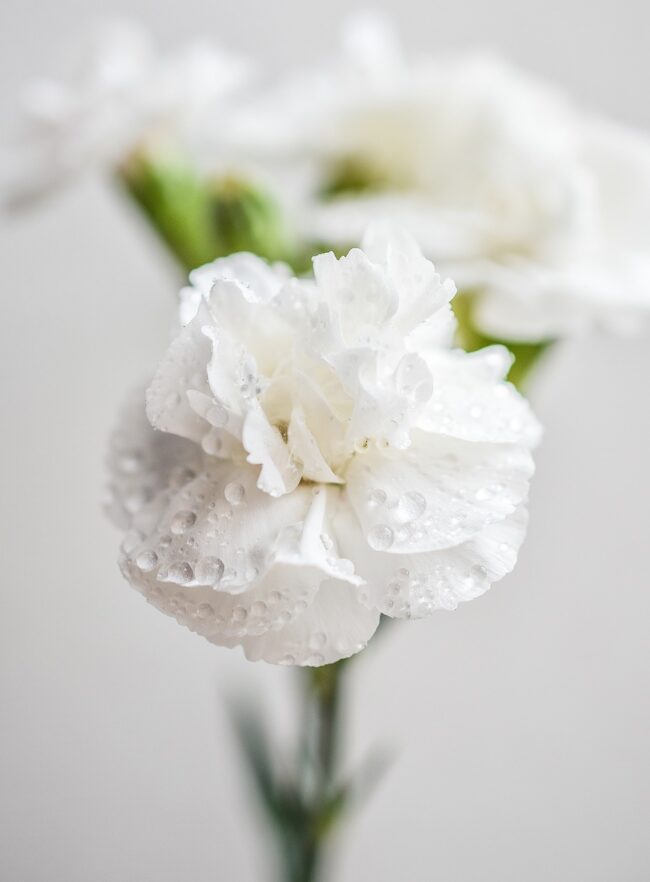
White carnations represent pure love and good luck. They express innocent, pure love and are traditionally used in wedding bouquets or as boutonnieres for formal occasions.
78. White Orchid
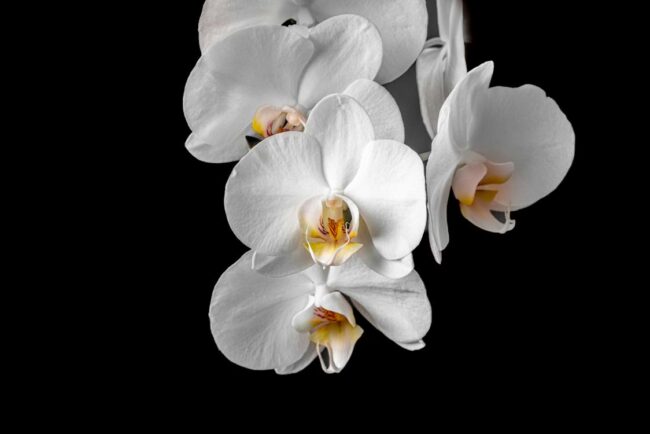
White orchids symbolize innocence, elegance, and beauty – ideal to give as an expression of admiration and respect. They also signify reverence and humility.
79. Calla Lily
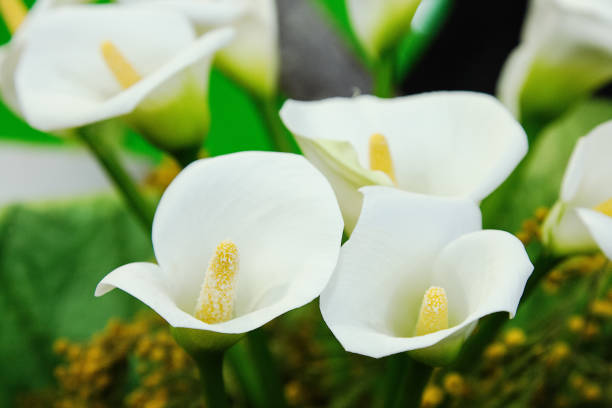
Calla Lilies symbolize purity and innocence. In some cultures, they are also used to represent rebirth and resurrection, aligning with their springtime and blooming nature.
80. White Peony
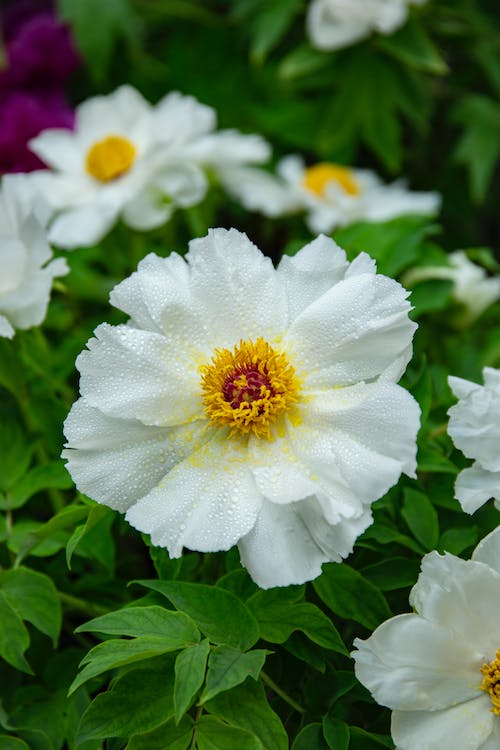
The white peony represents innocence and purity. In Chinese culture, it’s often used as a metaphor for female beauty. It can also symbolize bashfulness due to the popular myth that nymphs used to hide in their petals.
Flowers That Symbolize Mystery and Elegance
81. Black Rose

Black roses, often portrayed in fiction and folklore, are rare in nature. They symbolize mystery, death, and farewell. However, they can also represent rebirth or the beginning of something new. Their dark hue evokes a sense of intrigue and an uncharted journey.
82. Orchid
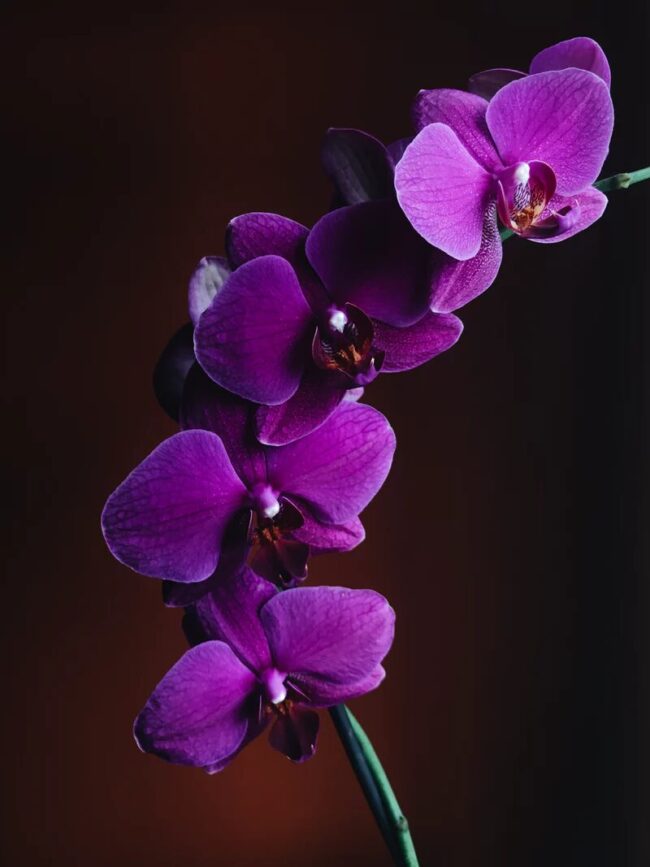
Orchids are a symbol of exotic beauty, strength, love, and luxury. In Victorian times, they were a sign of wealth and social status. Orchids also represent fertility and sensuality, while their rarity makes them a symbol of the unique and delicate.
83. Calla Lily
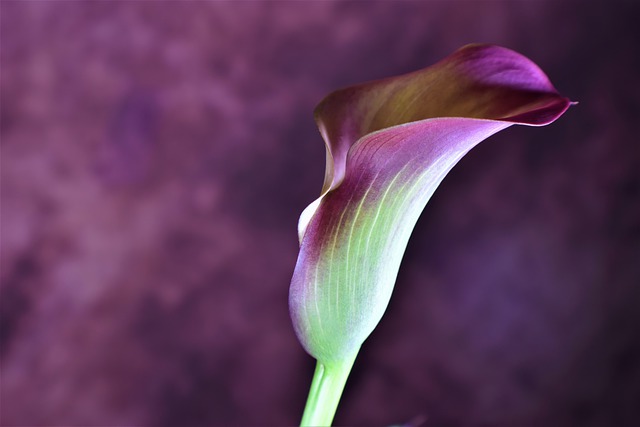
The Calla Lily represents magnificent beauty and sophistication, owing to its sleek trumpet-shaped bloom and graceful curves. They are often used in weddings as they also symbolize purity and faith.
84. Anemone
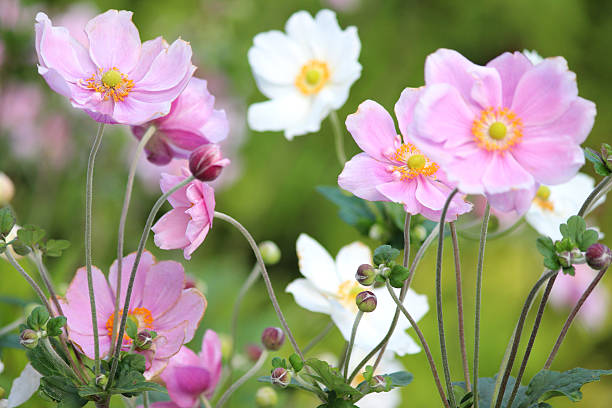
Anemones are delicate flowers that have a rich history of symbolism. They stand for anticipation and excitement for the future. On the darker side, they can also symbolize fading hope and a feeling of having been forsaken.
85. Queen Anne’s Lace

Queen Anne’s Lace symbolizes sanctuary, complexity, and delicacy. It’s said to represent protection, given its tied roots with lace and its resemblance to a classic lace pattern— intricate, detailed, and elegant.
86. Hellebore

Hellebores, sometimes known as Christmas or Lenten roses, symbolize serenity, tranquility, and peace. Despite their toxic nature, they convey a beautiful sentiment of calm and quiet reflection.
87. Dark Purple Iris
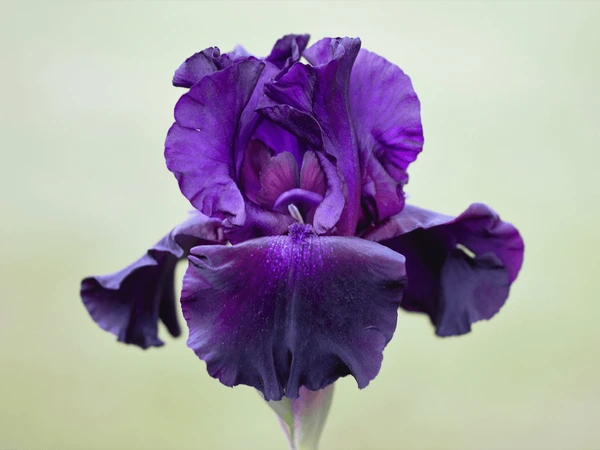
The dark purple iris is a symbol of wisdom, royalty, and respect. It carries a message of power and nobility. The deep, nearly black color adds a layer of mystery and intrigue.
88. Vanda Orchid
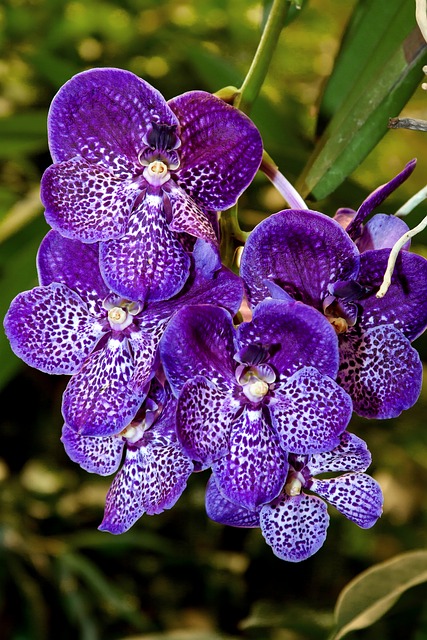
The Vanda Orchid, with its mysterious and exotic aura, signifies beauty, strength, and thoughtfulness. It’s often used to celebrate accomplishments and express deep love and admiration.
89. Fritillaria
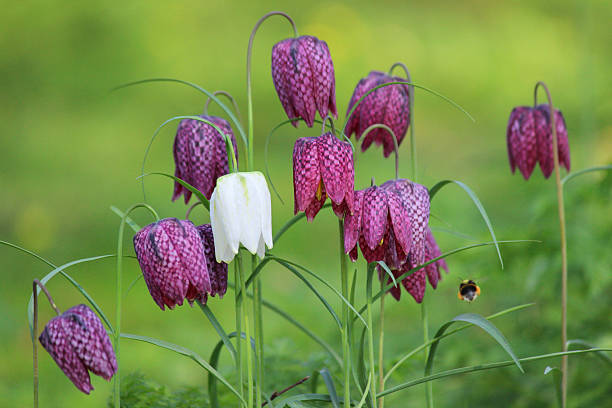
Fritillaria, with its unique checkered petals, symbolizes perseverance and resilience. They are often associated with the strength to overcome challenges and adversity, making them a symbol of hope and endurance.
90. Moonflower
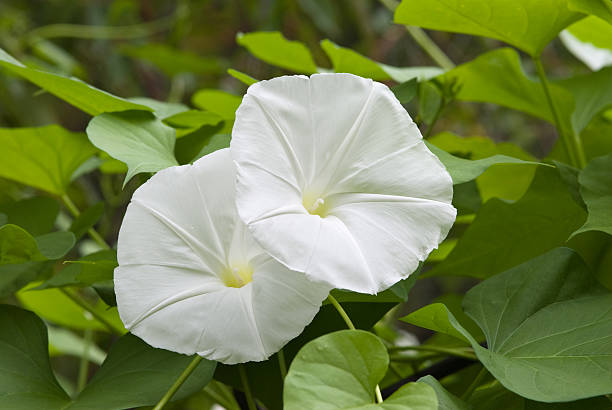
Moonflowers, which bloom only at night, symbolize the mysteries of the subconscious, dreams, and intuition. Their fleeting beauty is a reminder of the temporary nature of life, adding to their allure and mystique.
Flowers That Symbolize Renewal and Hope
91. Daffodil
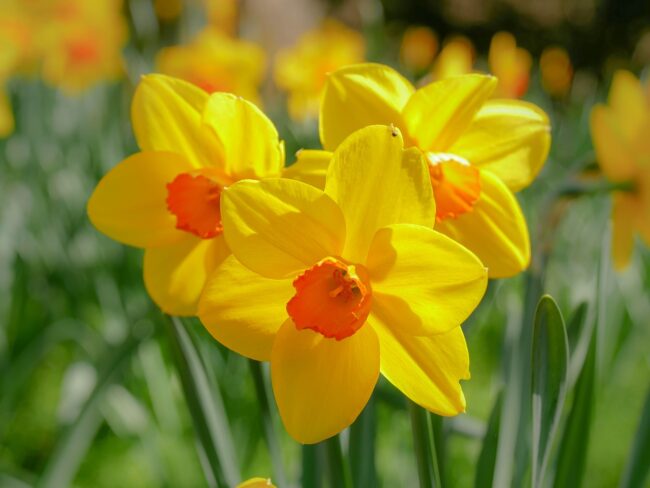
Daffodils, with their bright yellow petals, are often associated with renewal and the arrival of spring. As they are among the first flowers to bloom after winter, they symbolize hope and new beginnings.
92. Crocus
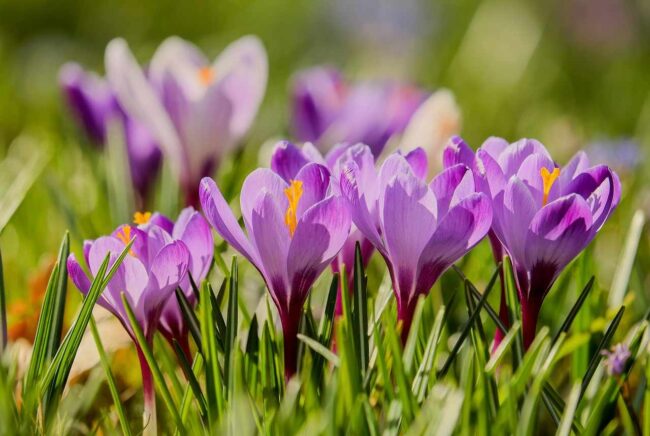
Crocuses also bloom early in the spring, representing a transition from winter to spring, symbolizing rebirth and hope. In some cultures, they are seen as a sign of happiness and youthful joy.
93. Snowdrop
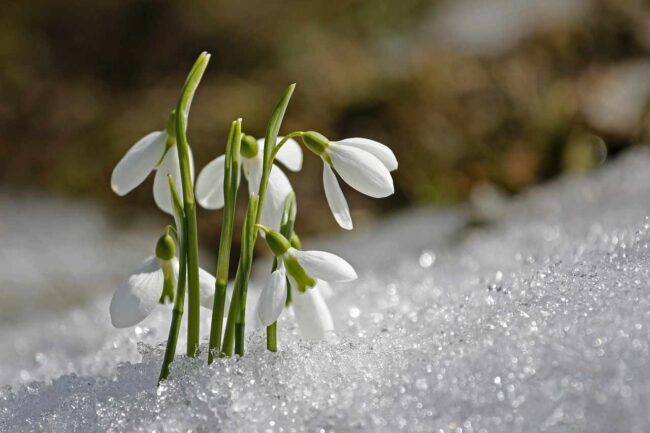
The snowdrop, which often blooms while snow is still on the ground, is another emblem of hope. Its resilience in cold weather makes it a symbol of determination and the promise of better days ahead.
94. Lily of the Valley
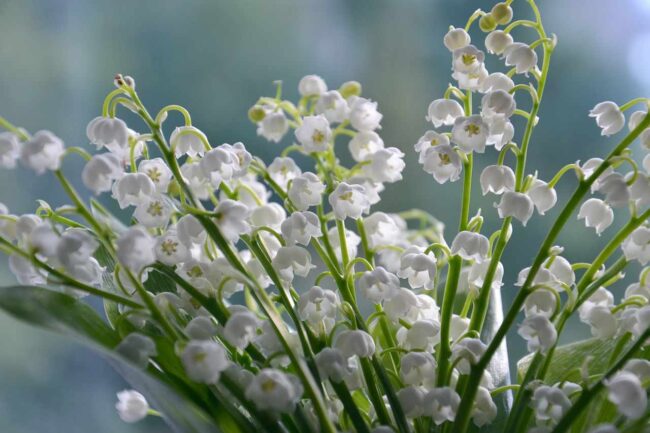
The Lily of the Valley, with its delicate white flowers, symbolizes humility, purity, and the return of happiness. It’s often associated with the Virgin Mary, giving it a sense of divine hope and renewal.
95. Primrose
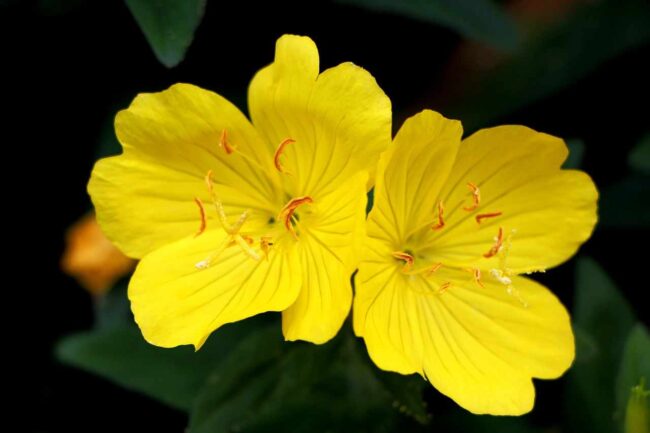
Primrose, blooming in early spring, represents youth and new beginnings. Their vibrant colors symbolize the freshness of spring and the renewal of life after winter.
96. Cherry Blossom
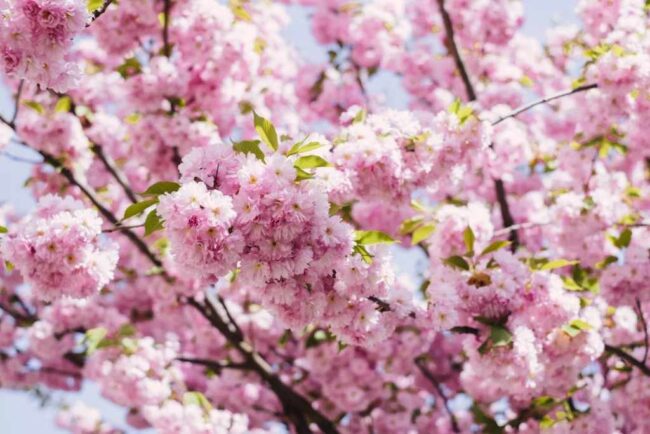
Cherry blossoms, known for their fleeting beauty, symbolize the transient nature of life in Japanese culture. However, they also represent renewal and the beauty of new life in spring.
97. Tulip
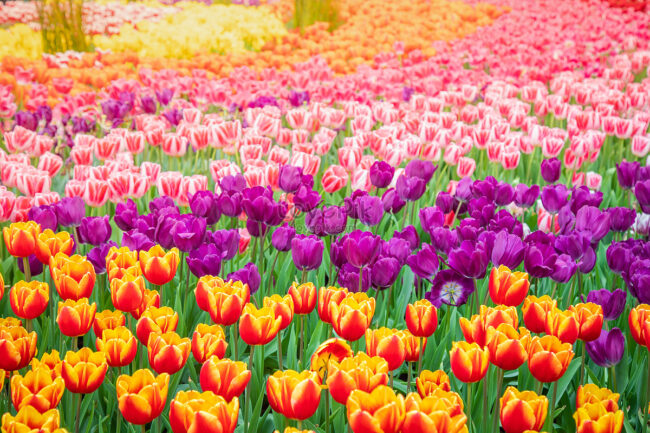
Tulips, with their variety of colors, generally symbolize the perfect love. They bloom in the spring, making them a symbol of renewal and the cycle of life.
98. Hyacinth
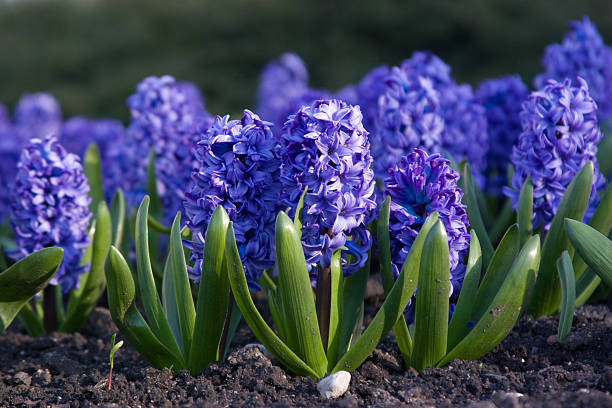
Hyacinths are known for their strong fragrance and vibrant colors. They are often associated with rebirth and spring, but different colors can also symbolize different things, like sincerity or jealousy.
99. Magnolia
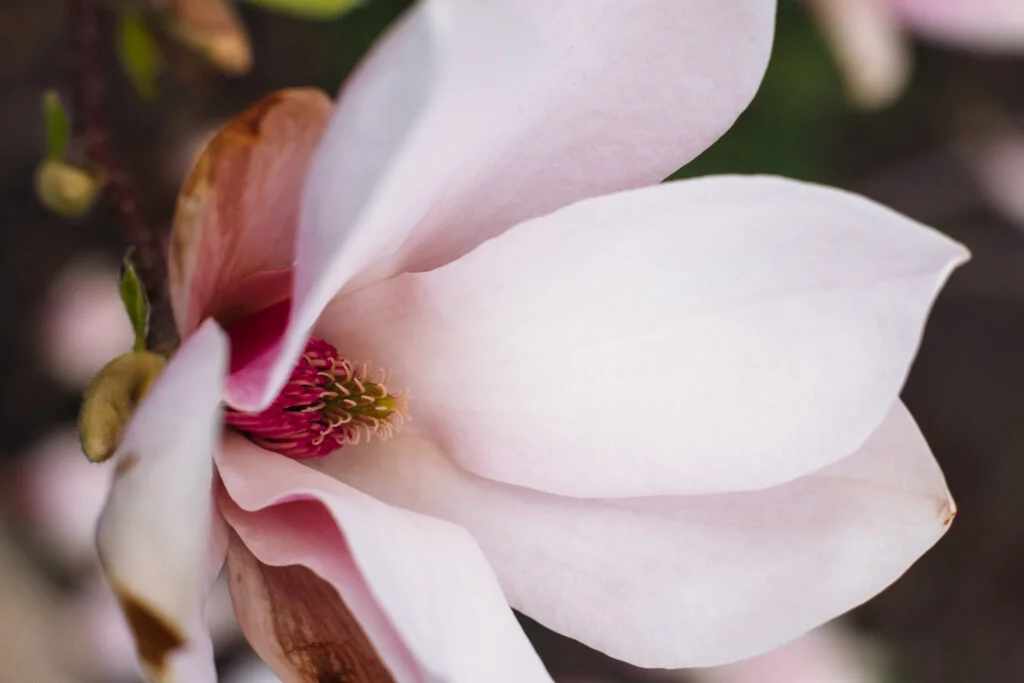
Magnolias symbolize dignity and nobility. In ancient China, magnolias were considered the symbol of womanly beauty and gentleness. They also symbolize the arrival of spring and renewal.
100. Bluebell
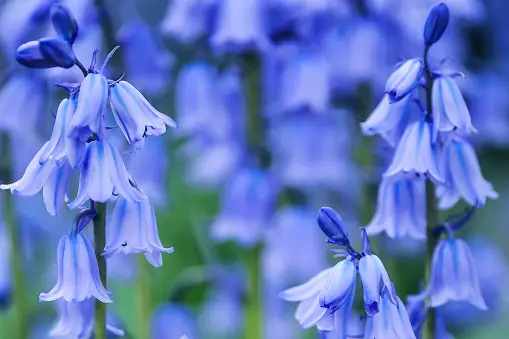
Bluebells are often associated with humility and gratitude. They bloom in spring, symbolizing renewal, fresh starts, and the eternal cycle of life.
Unique and Unusual
101. Corpse Flower (Amorphophallus titanum)
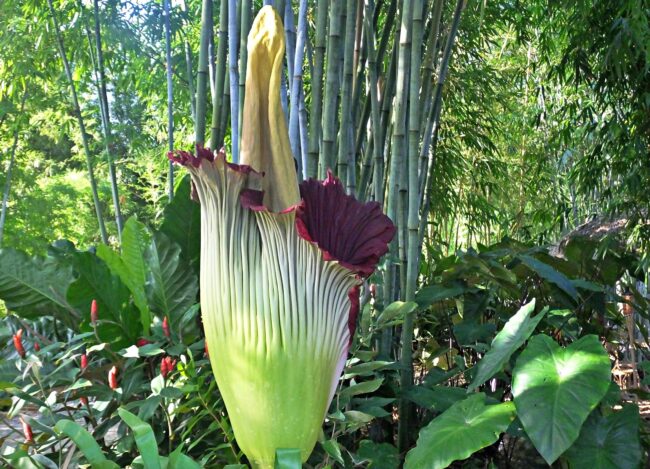
The Corpse Flower is unique and unusual for its gigantic size and foul smell, which is similar to rotting meat. This peculiar flower symbolizes the fascinating diversity of nature. Despite its off-putting characteristics, it attracts a lot of attention, reminding us that beauty can be found in the most unexpected places.
Conclusion
In conclusion, flowers hold significant symbolism in different cultures around the world. From representing love and beauty to renewal and new beginnings, these delicate blooms serve as a reminder of the wonders of nature and the constant cycle of life. Each flower has its own unique meaning, making them not only beautiful but also interesting.

